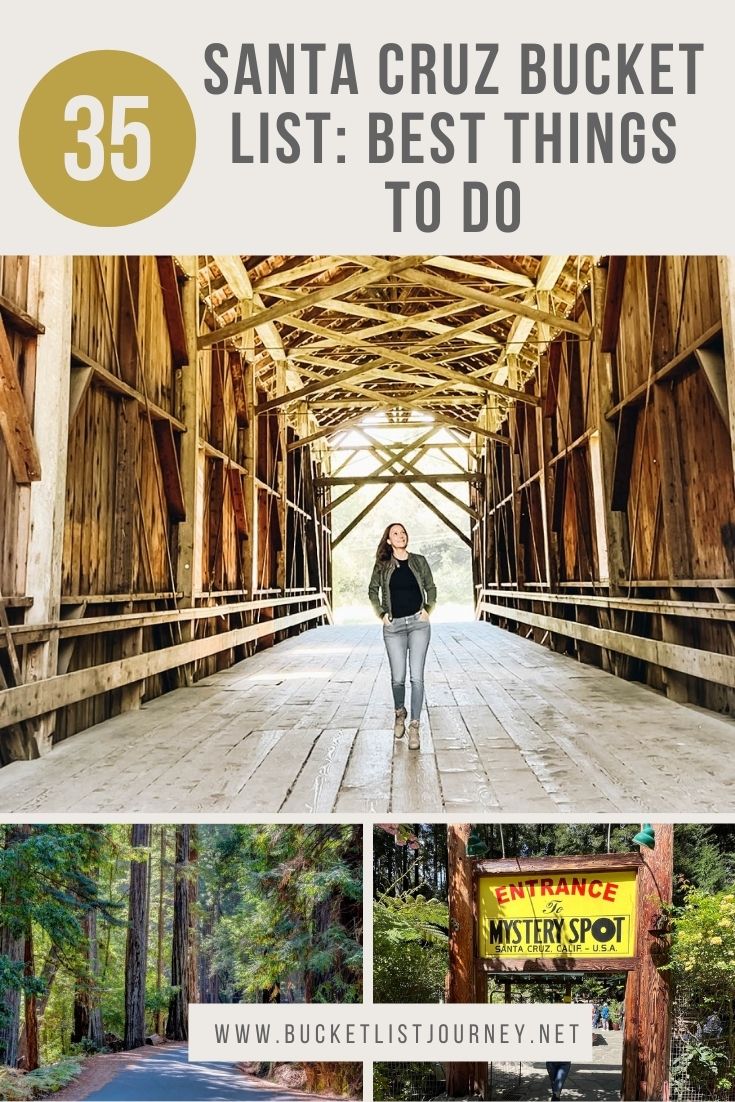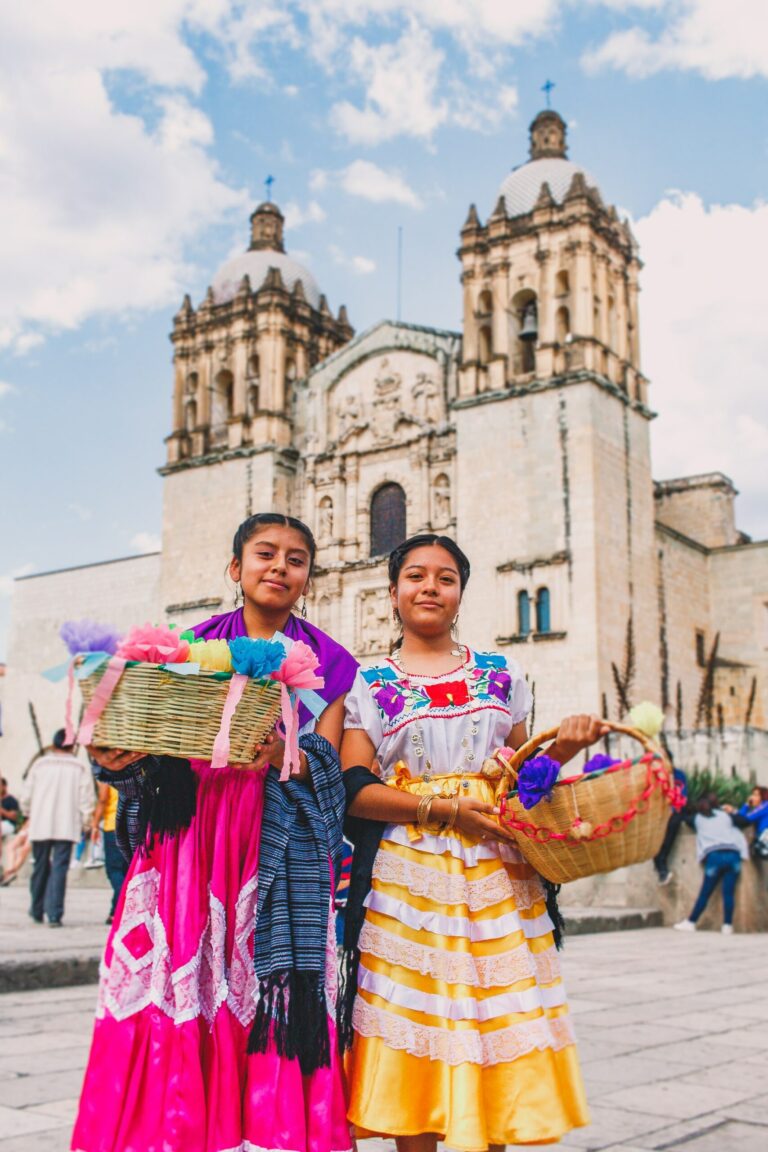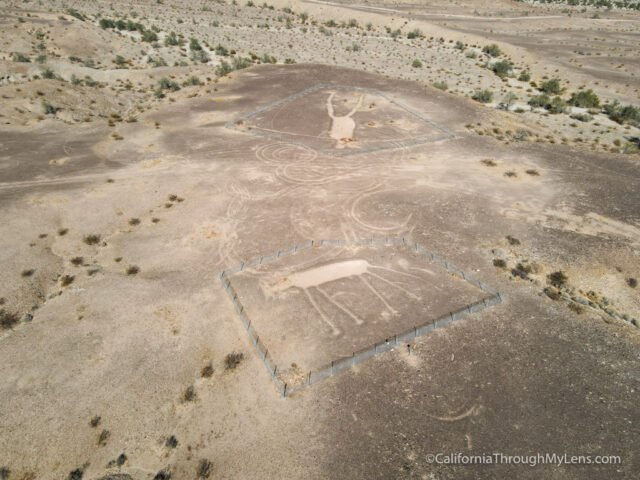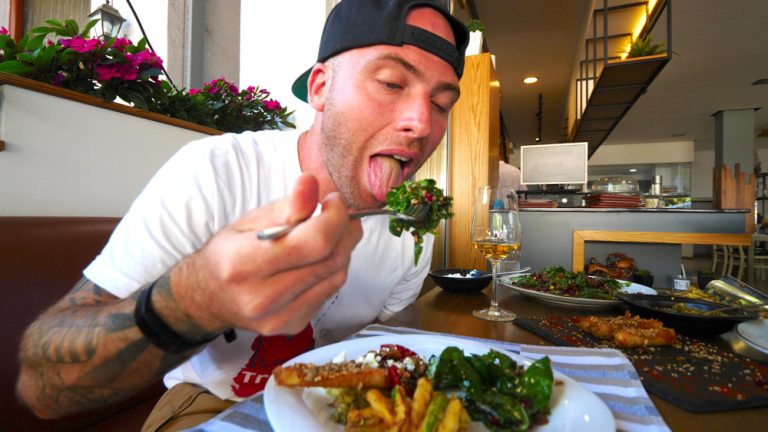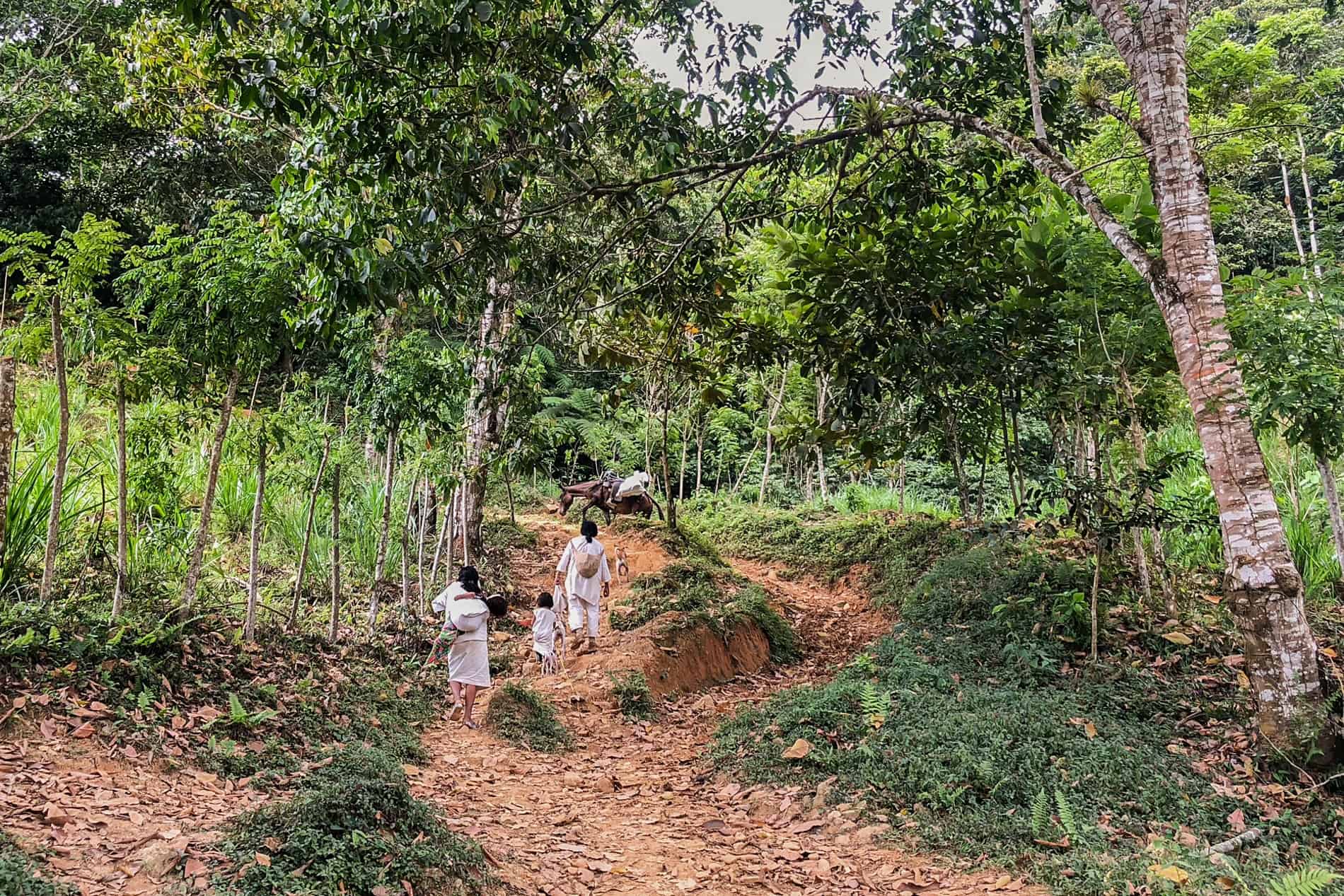
Thick, tropical green on Day 2 of the Lost City Trek.
They say this mountain is the ‘heart of the world’ for them and that when the balance of this place breaks, the whole world will break. They used to close the National Park for two weeks, but since Hurricane Matthew in 2016, which also hit the area hard, they saw it as a warning and now close it for the entire month to balance the bad energies visitors bring in.

Elevation: Started at 400m and walked to 800m.
Getting there was an expedition into the world’s second-largest biodiversity system and a passage through the heartland of Colombia’s oldest indigenous communities.
Two avid trekkers on my trip confessed that the Lost City was more difficult than the Inca Trail, Kilimanjaro and trekking to Everest Base Camp.
There are no porters, and while later on in the trek there is a chance to share the cost of a horse to carry some load for you, you will be carrying that one pack every day.

This is a seven-day adventure that includes accommodation in Santa Marta before and after the five days of trekking and the addition of the exclusive fifth-day trekking route not open to anyone else.
Trekking Time: 3 hours
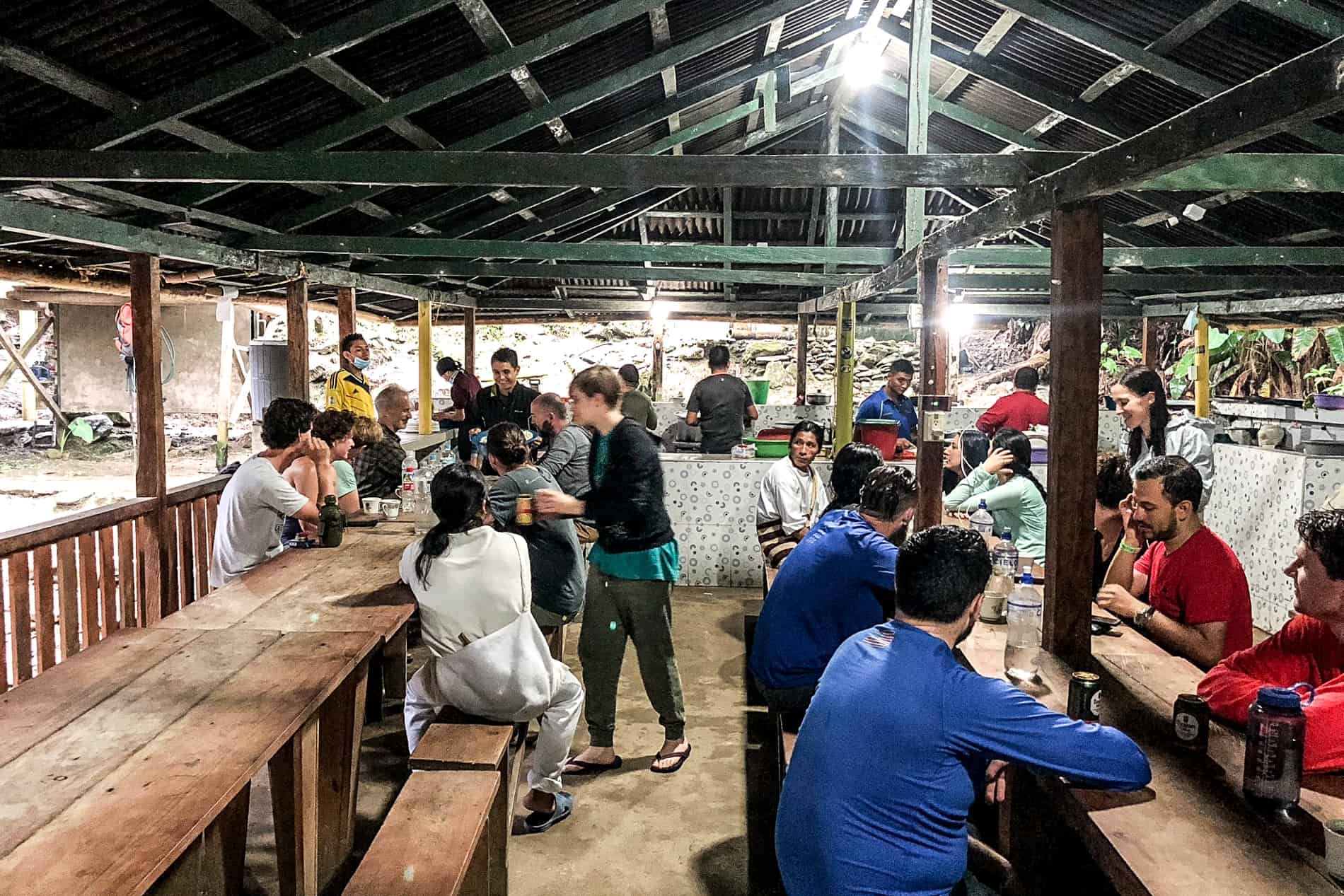
History of the Lost City of Colombia
This rich environment is also home to some of the best-preserved cultures in America, isolated and unseen until the second half of the 20th century. The Kogui, Wiwa, Arhuaco and Kankuamo communities are descendants of the Tayrona (Tairona) people of la Ciudad Perdida (Lost City), and have been living here for centuries and now maintain it. You are simply a visitor walking amongst them on their land throughout the trek days.
Day 2. Trek en route to Teyuna Paraiso Camp.
Trekking through forested hills.
It’s also the day you will tackle one of the river crossings before navigating an ‘Indiana Jones’ style patch of jungle with steep rocks to climb to get onto the trail leading to camp. It felt exciting, raw, untouched, and secret. A feeling in the run-up to what is coming.
The archaeological site of la Ciudad Perdida is said to be only 10% uncovered.
The steep start of the 1,200 stairs to the Lost City.
The slow and steady pace of the group. Getting to the Lost City is not a race.
Why is it called the Lost City?
The introduction of tourism to this once isolated community allows both for the education of travellers about the indigenous way of life, and for these people to continue to reclaim their land that was once lost or displaced due to the illegal activity in the mountains from the growth of coca plantations for cocaine production.
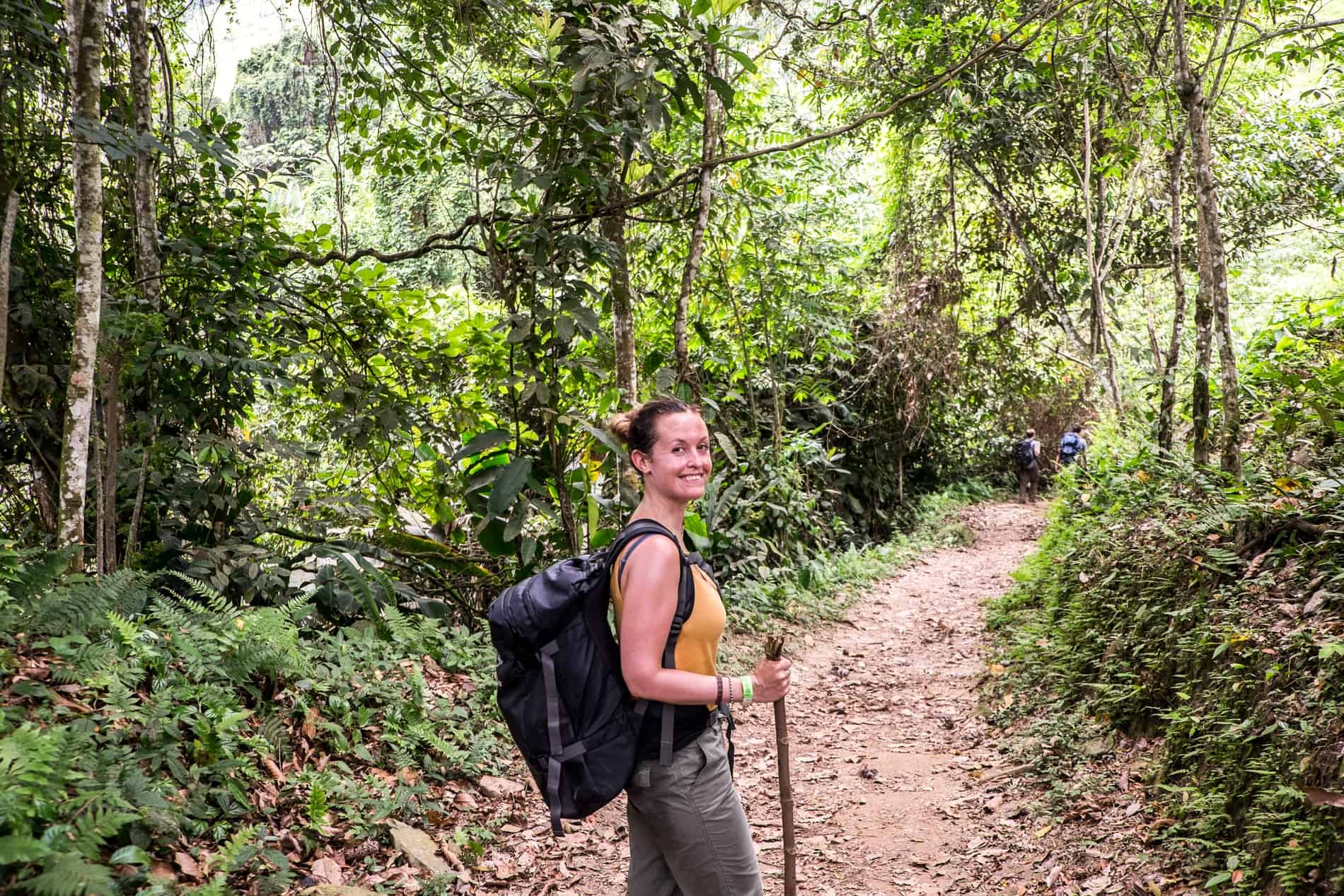
Day 1. Santa Marta. Transfer to Machete / Overnight in Wiwa Camp.
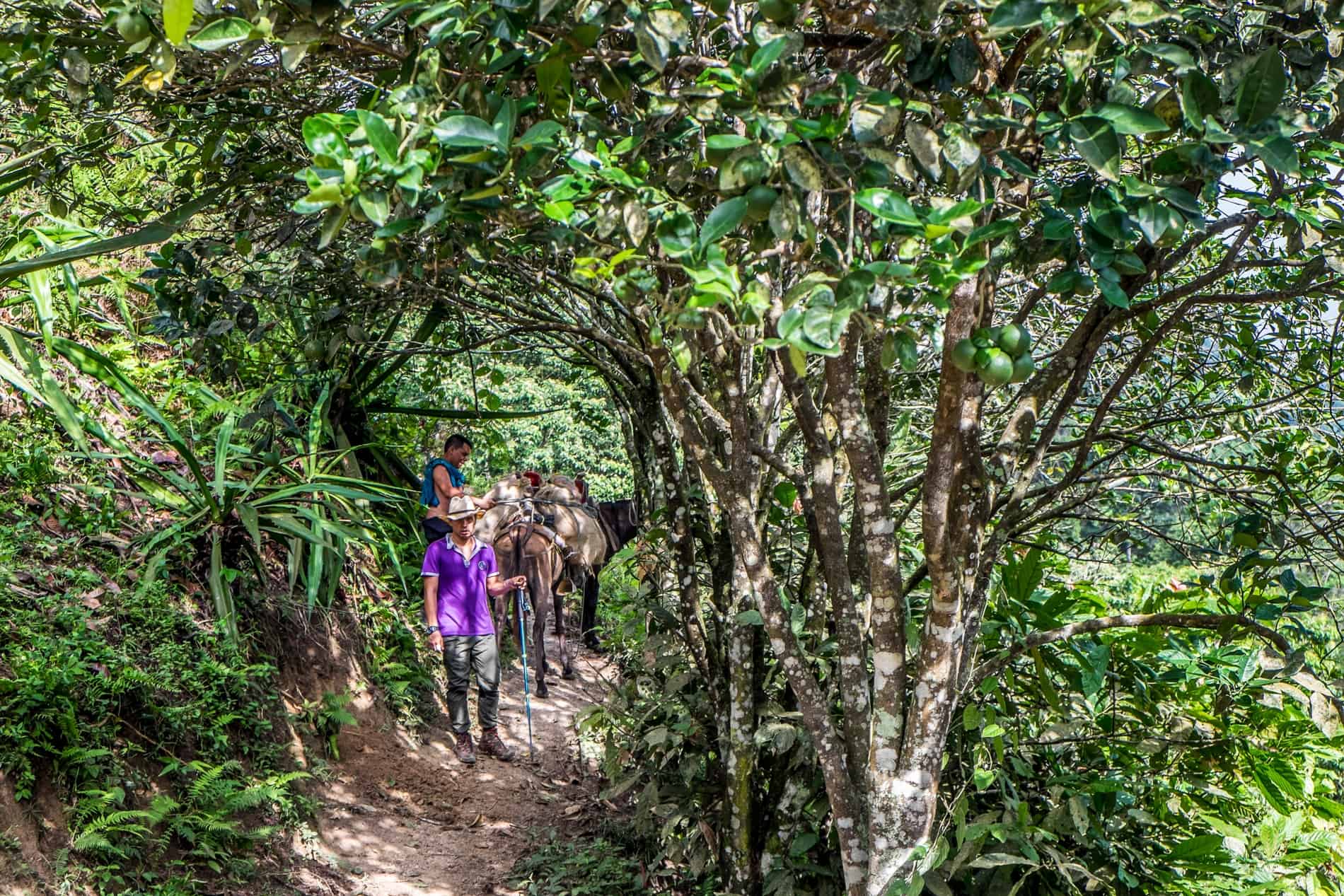
One last river crossing brings you right to the heart of the Wiwa village, made even more special for the fact that it is the home of our Wiwa guide, Gabo who helped lead our entire journey.
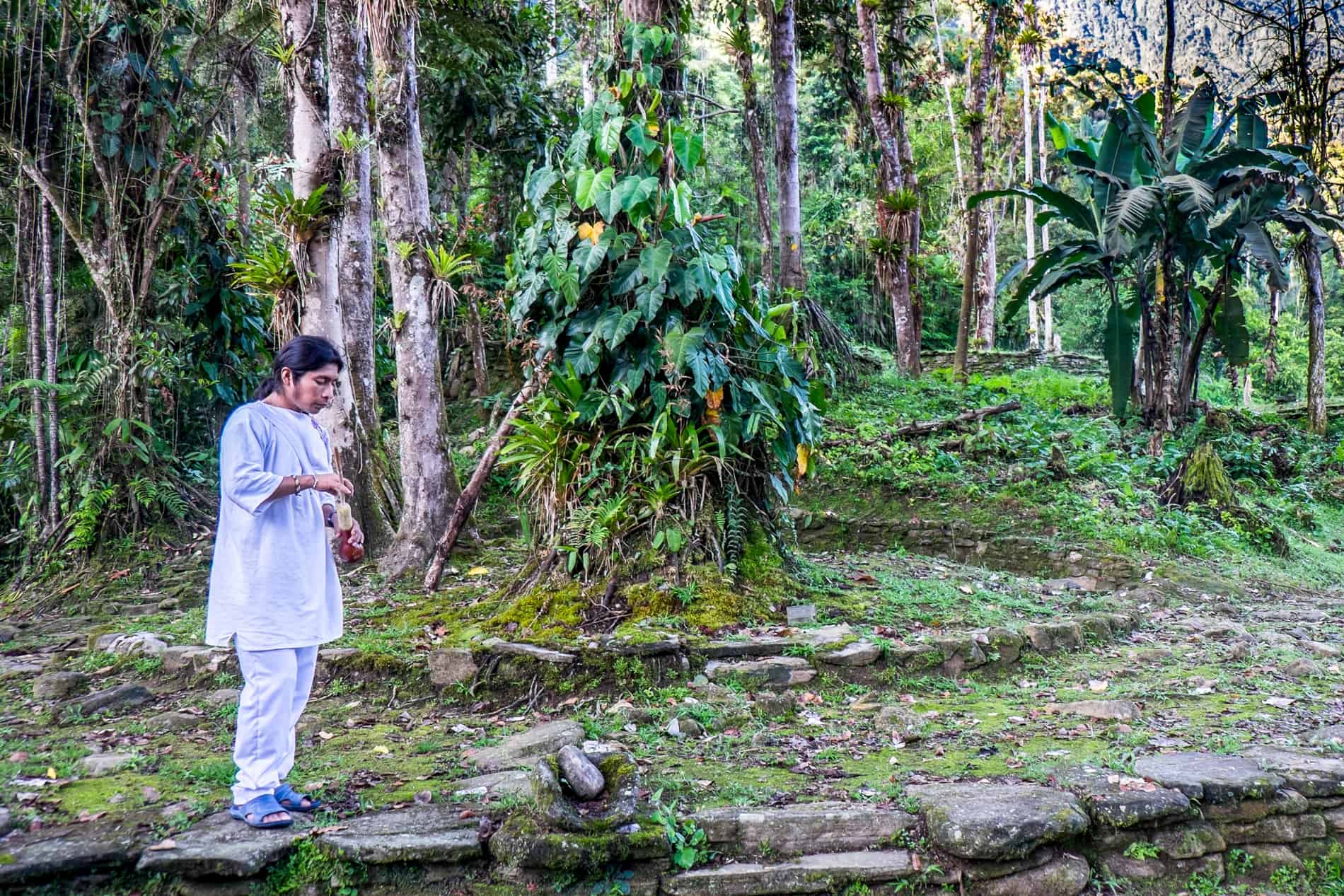 Stretches of rugged terrain.
Stretches of rugged terrain.
How Long is the Trek to the Lost City?
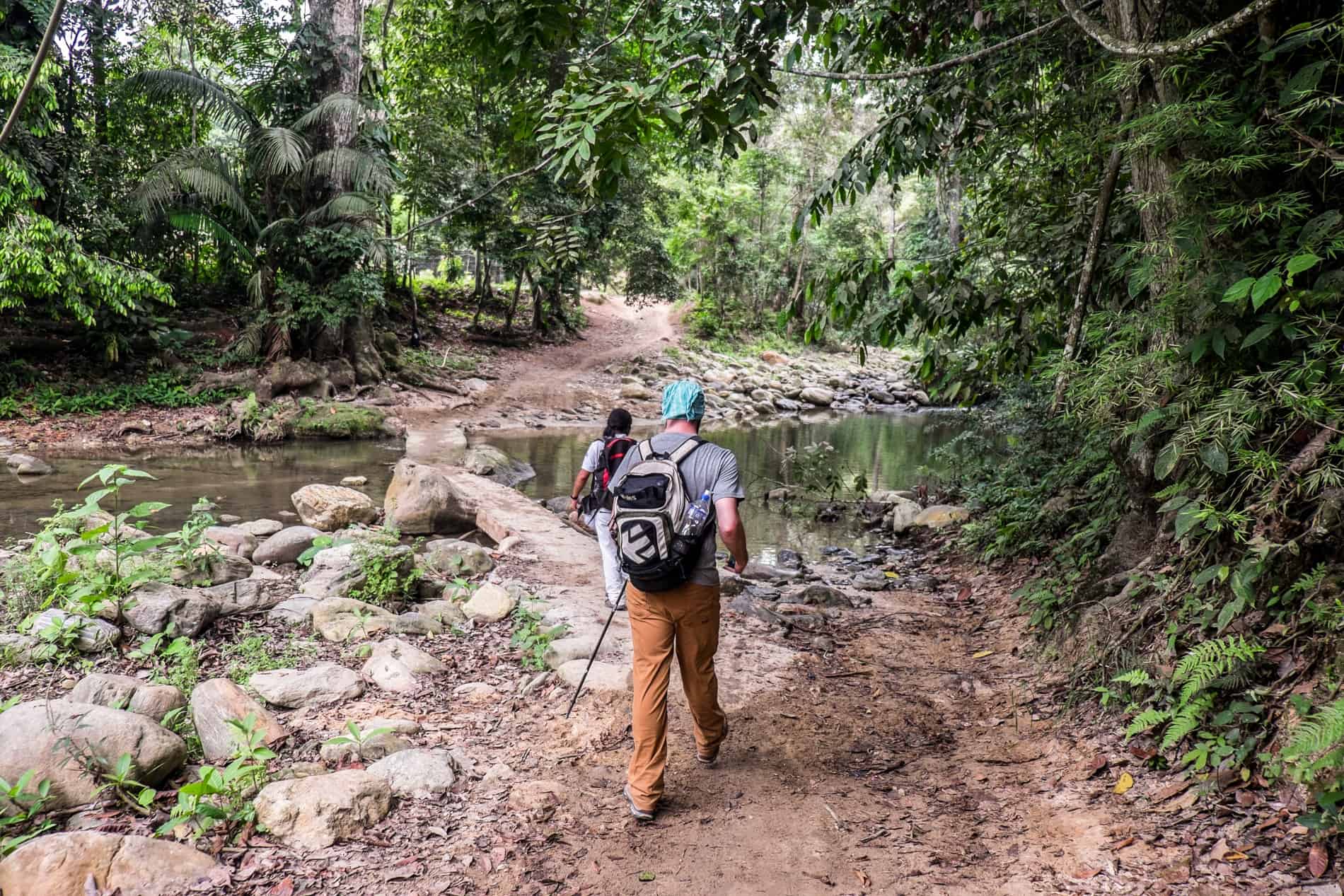
Basket weaving at the Wiwa Village.

Ciudad Perdida Tours – Who to Trek to the Lost City With
But while the Lost City has never truly been lost, with Tayrona descendants having always known of its existence under the covering of foliage that kept it hidden from the outside world, we should be grateful we are given the opportunity to witness it, knowing that the pain and glory of getting there on foot adds greater weight to its meaning.
At 5.30 am, we were the first to leave. It took one hour on a short jungle walk and river crossing before reaching the 1,200 narrow, steep, uneven stairs that climb up into the entrance to the Lost City.
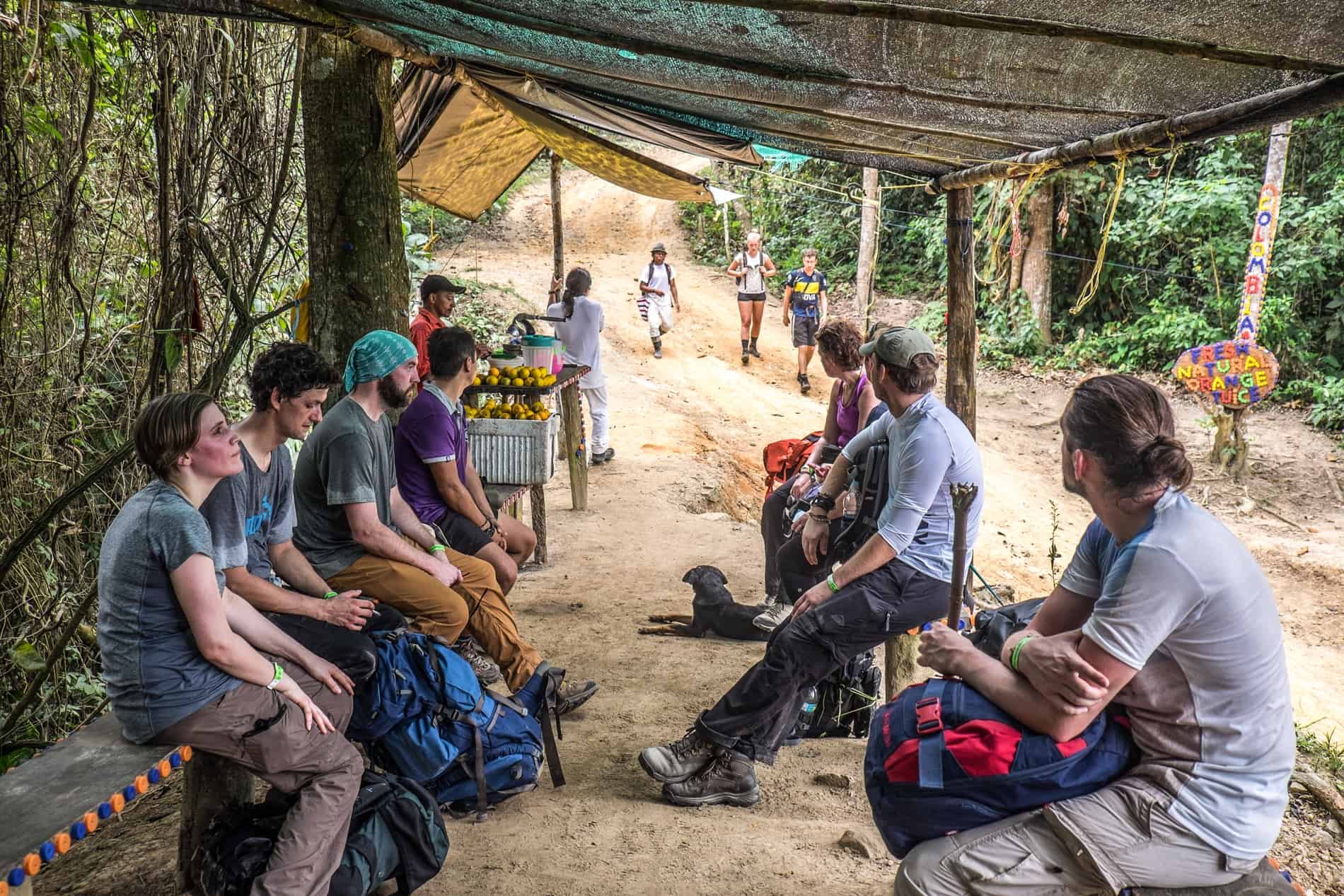
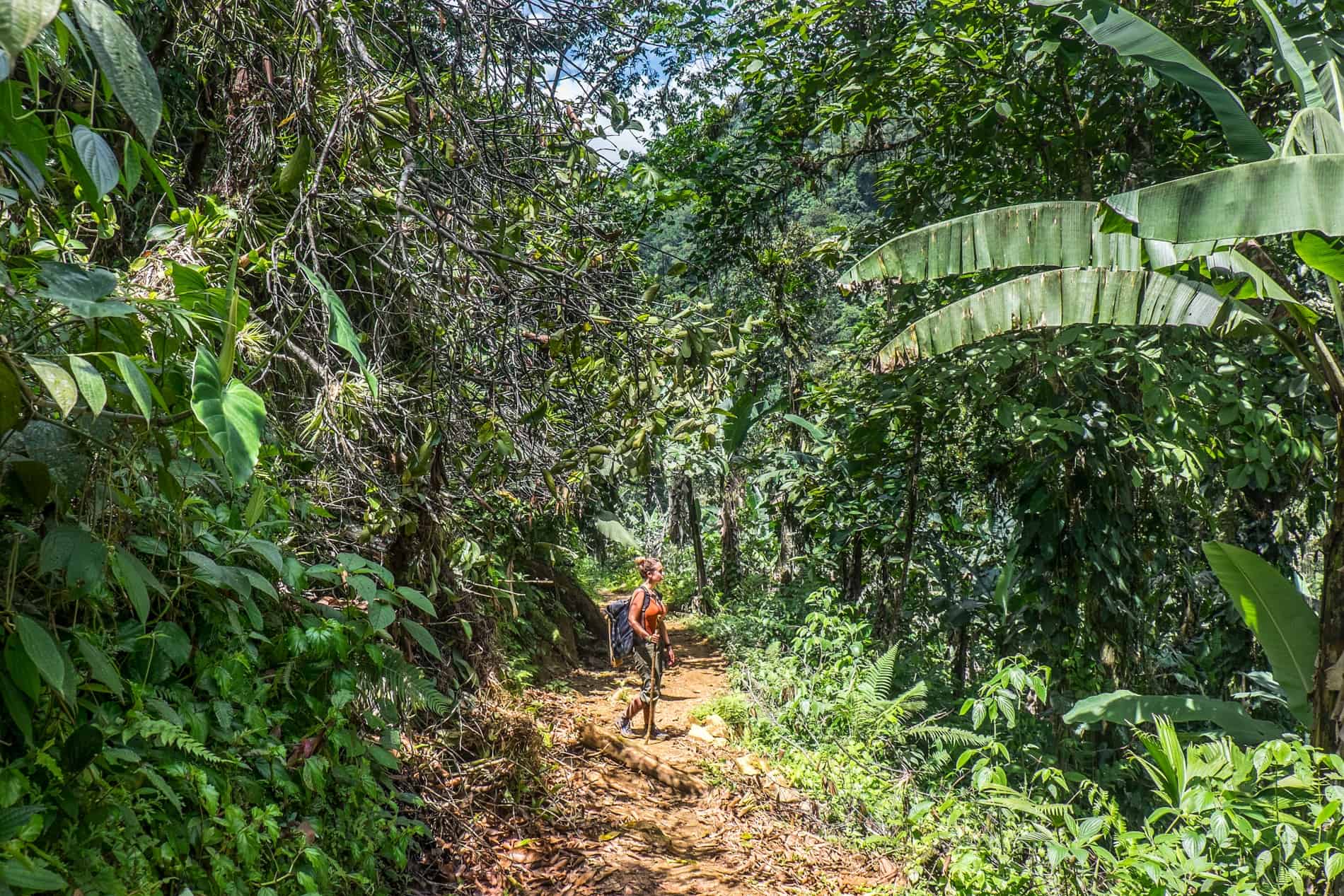

Our Wiwa guiding standing within the ruins of The Lost City.
Who I Trekked With – Positive Social Impact
It’s preciously this isolation and intrigue that brings in the more curious of travellers wanting to embark on the Ciudad Perdida trek. To find the Lost City.
Getting to the Lost City of Teyuna is undoubtedly the highlight of the trip, yet much of what it was and why it was there is still being unravelled.
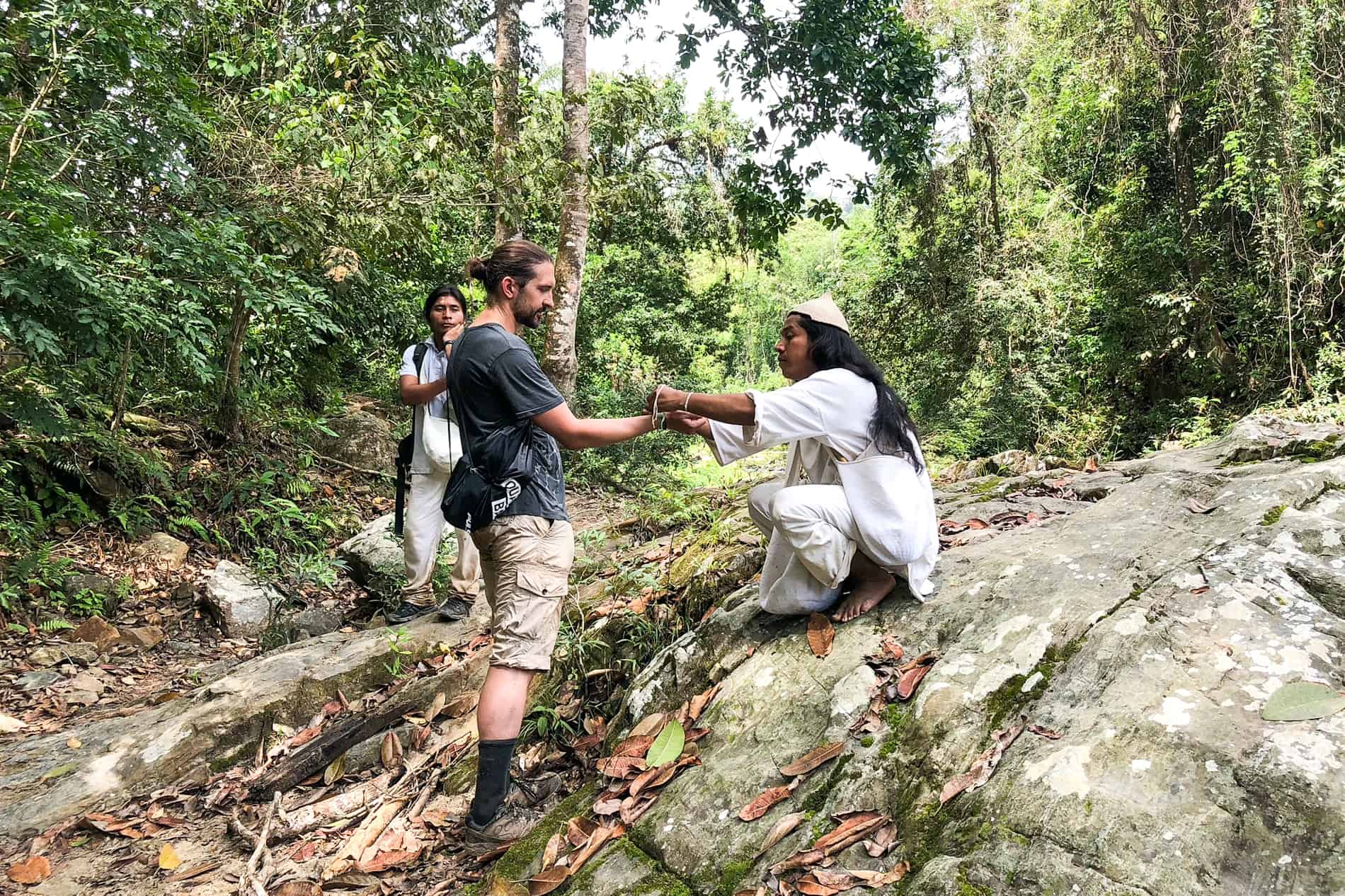
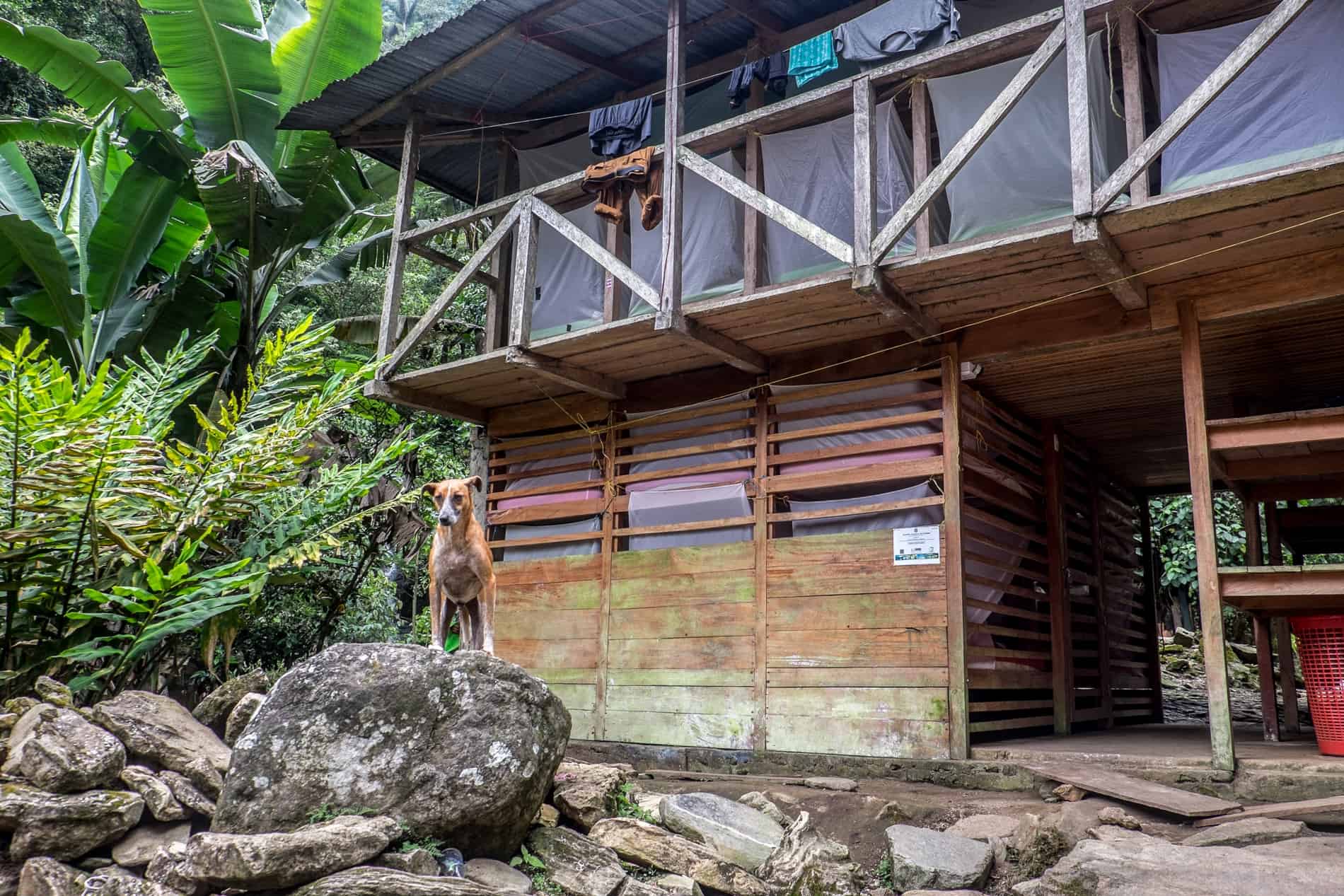
The trek to Ciudad Perdida, Colombia, takes you on a trail to an ancient civilisation.
Regardless of what company you choose, I do stress the importance of choosing a company that not only has licensed trekking guides, but that also works alongside the indigenous communities where a member of the Wiwa community is also trekking with you or where a significant portion of your money for the trek is being given to indigenous communities.
How Much Does it Cost to Do the Lost City Trek?
Some of the steeper Lost City climbs on mud paths.
A Guide to The Ciudad Perdida Lost City Trek in Colombia.
My Wiwa guide, Gabo, said it is special when groups go with an indigenous guide and that it is a real experience.
My number one rule would be that if an indigenous guide is not with you while trekking this sacred space, don’t choose that company. At the forefront of this kind of partnership is Wiwa Tours, whose work is to support the indigenous people, their rights and protection at the forefront of this trekking route.
- At least one night of accommodation in Santa Marta on either side of the trek, with luggage storage.
- Two-hour jeep ride to and from Santa Marta to start and endpoints of the trekking route (Machete and the Gotsezhi Wiwa indigenous community Village).
- Accommodation for the entire trek (basic camps of bunk beds and hammocks).
- Breakfast, lunch and dinners at the trek camps.
- A licensed and trained trekking guide and an accompanying indigenous guide.
- Permits /entrance for trekking in the Lost City / Sierra Nevada national park area.
Those who break the rules about what areas of the Lost City are open for exploration are fracturing the respect of the people who allow us to visit their land and eventually could get this route closed down.
- Travel insurance, which you must arrange yourself and ensure it includes emergency rescue.
- International flights/airfare.
- Visa costs for Colombia and the organisation of it.
- General trekking gear such as walking poles, although I was given a stick from the jungle
- Snacks.
- Medication (including altitude sickness tablets).
Best Time to Trek in the Lost City
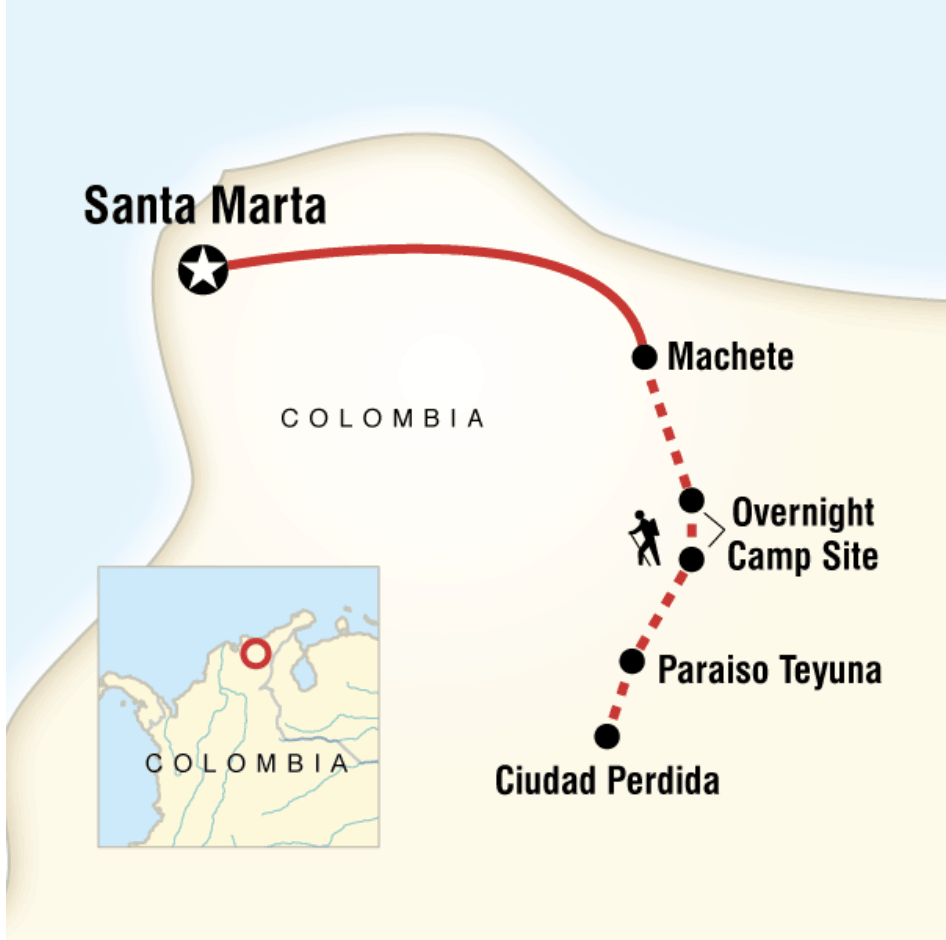
When is the Lost City Trek Trail Closed?
Stone terraces of Lost City Ciudad Perdida in Colombia.
The dense jungle of Sierra Nevada that you will pass through on the trek route.
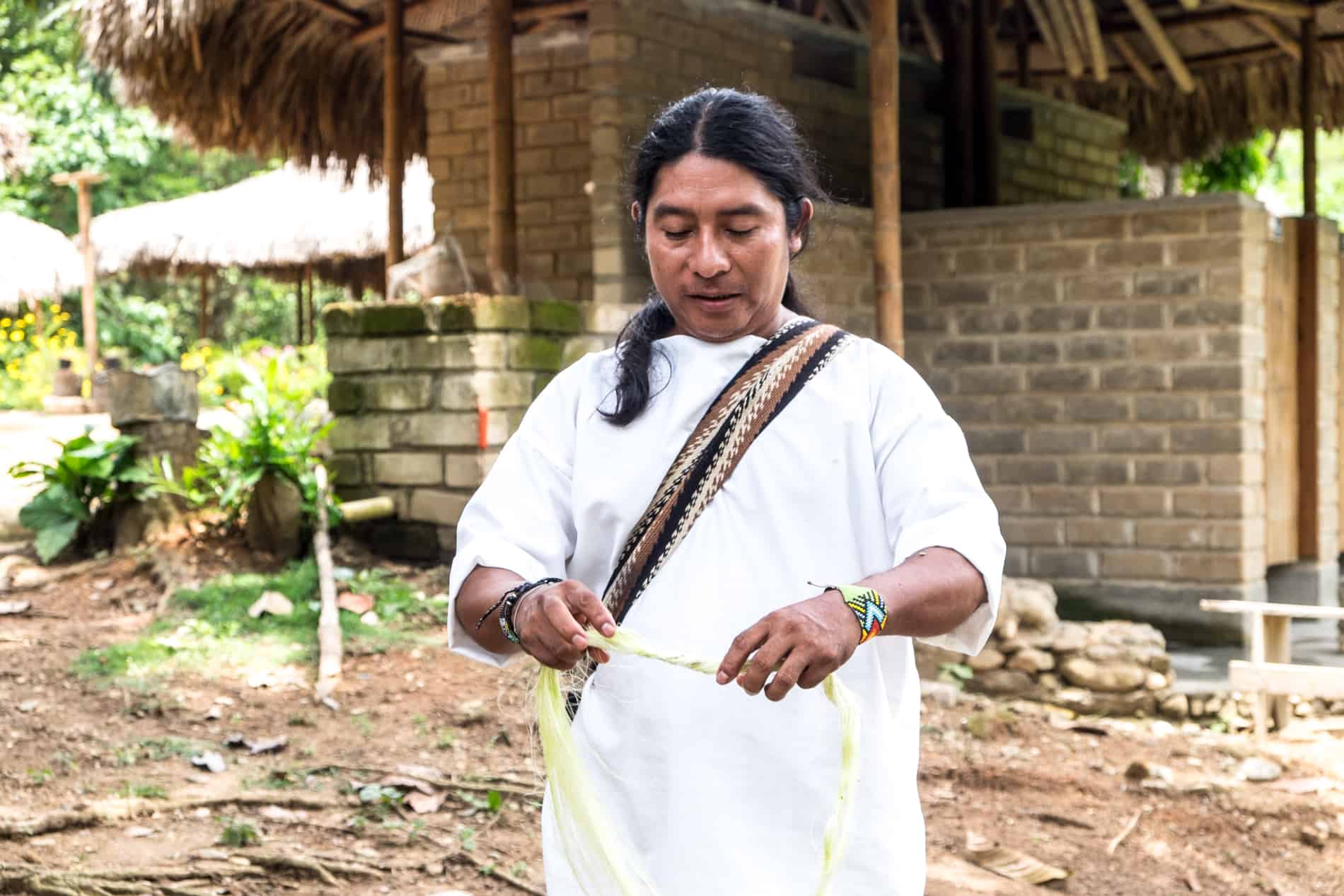
Lost City Trekking Seasons
Long forgotten, nature covered it for centuries, but with the help of archaeologists and the blessing of local indigenous people who today protect their ancestral site, around 10% of it has been uncovered and made open for those who make the pilgrimage here on the Lost City trek.
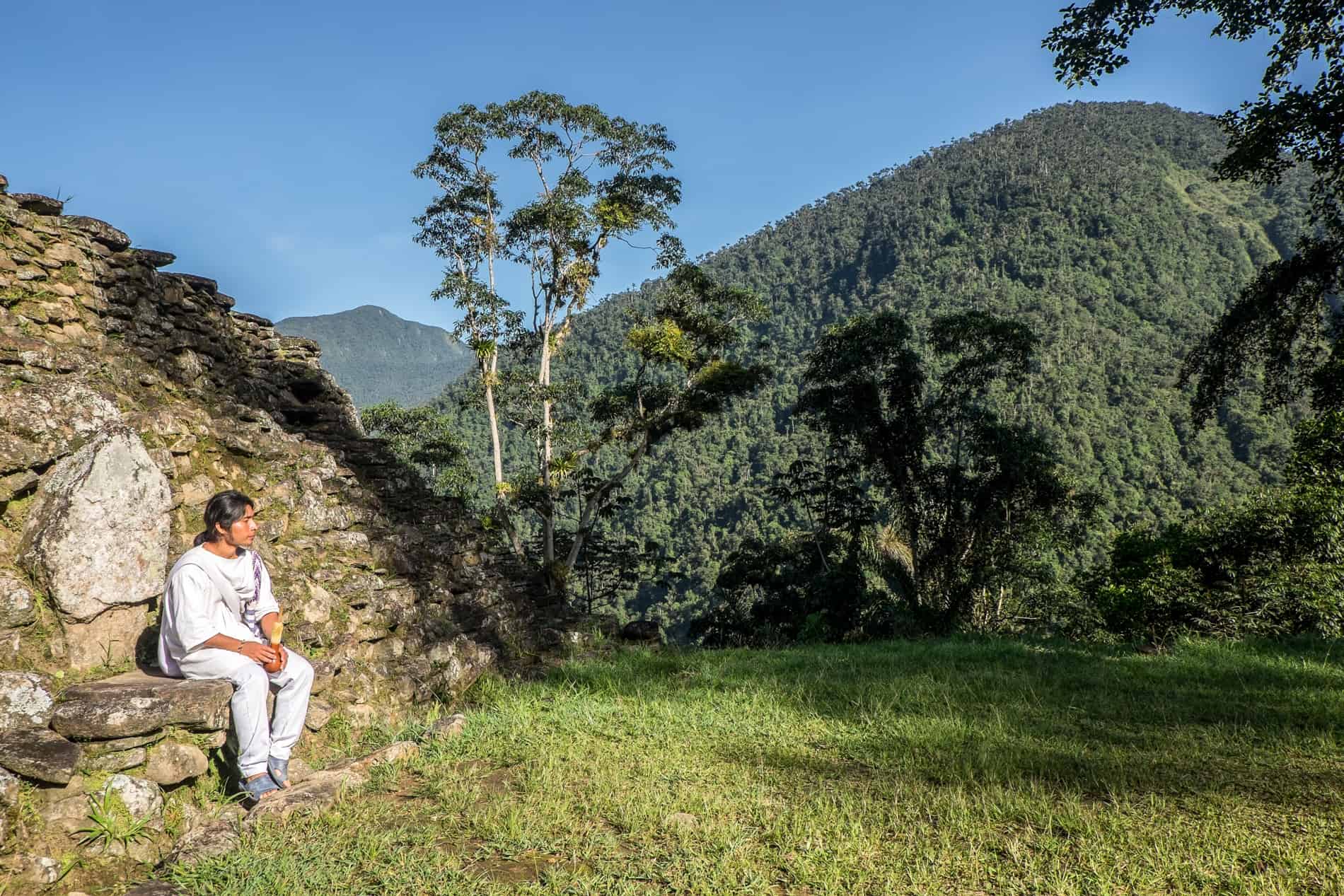
Trekking Time: 5 – 6 hours
Lost City Trekking Route – Snapshot
With this comes a feeling of empowerment and pride that outsiders want to visit the Wiwa people and better understand them and their culture.
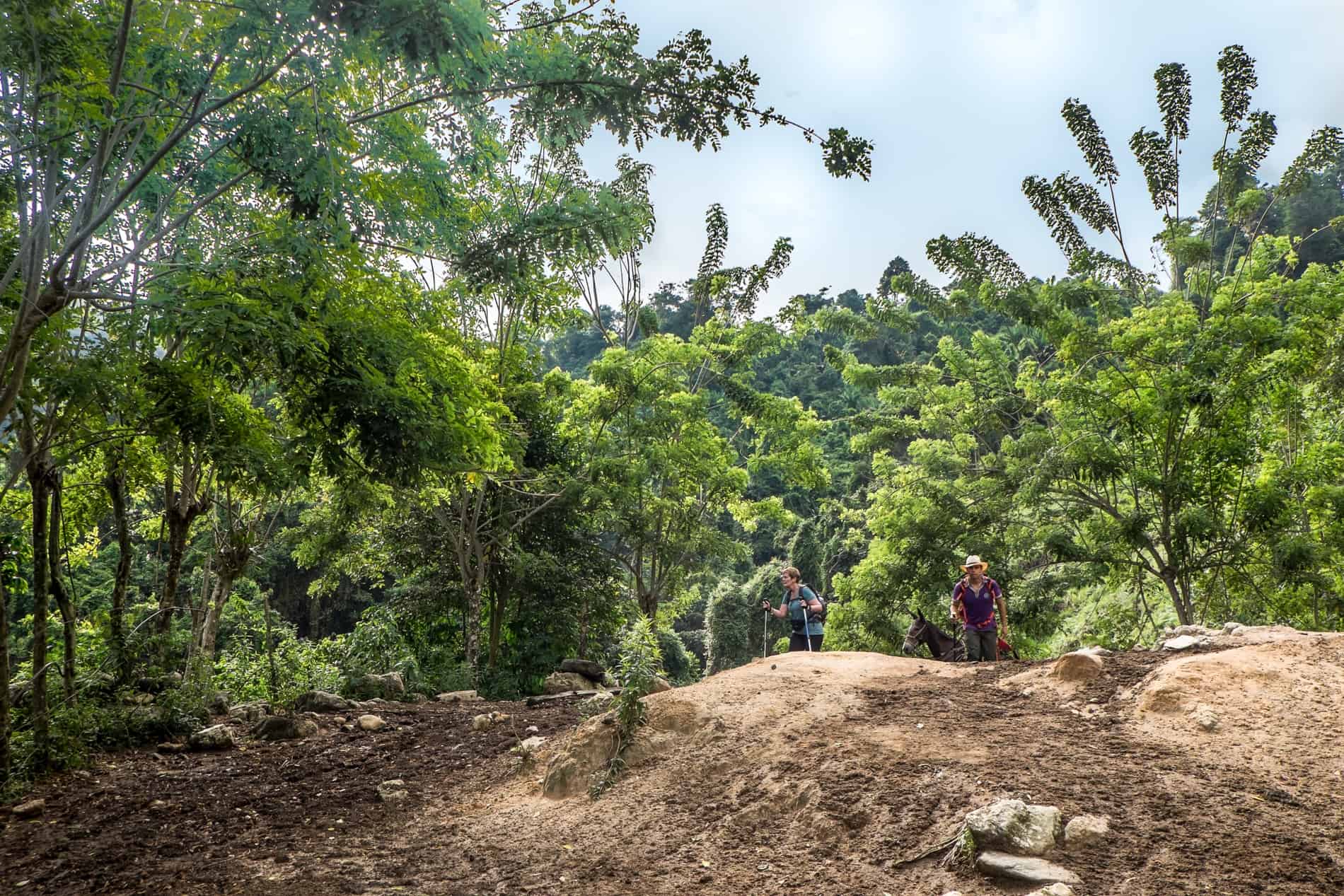
Taking a break at a local house.

My Lost City Trek cost around 0 for the seven-day round-trip package outlined above, including the fifth-day trekking route not open to any other trekking company.
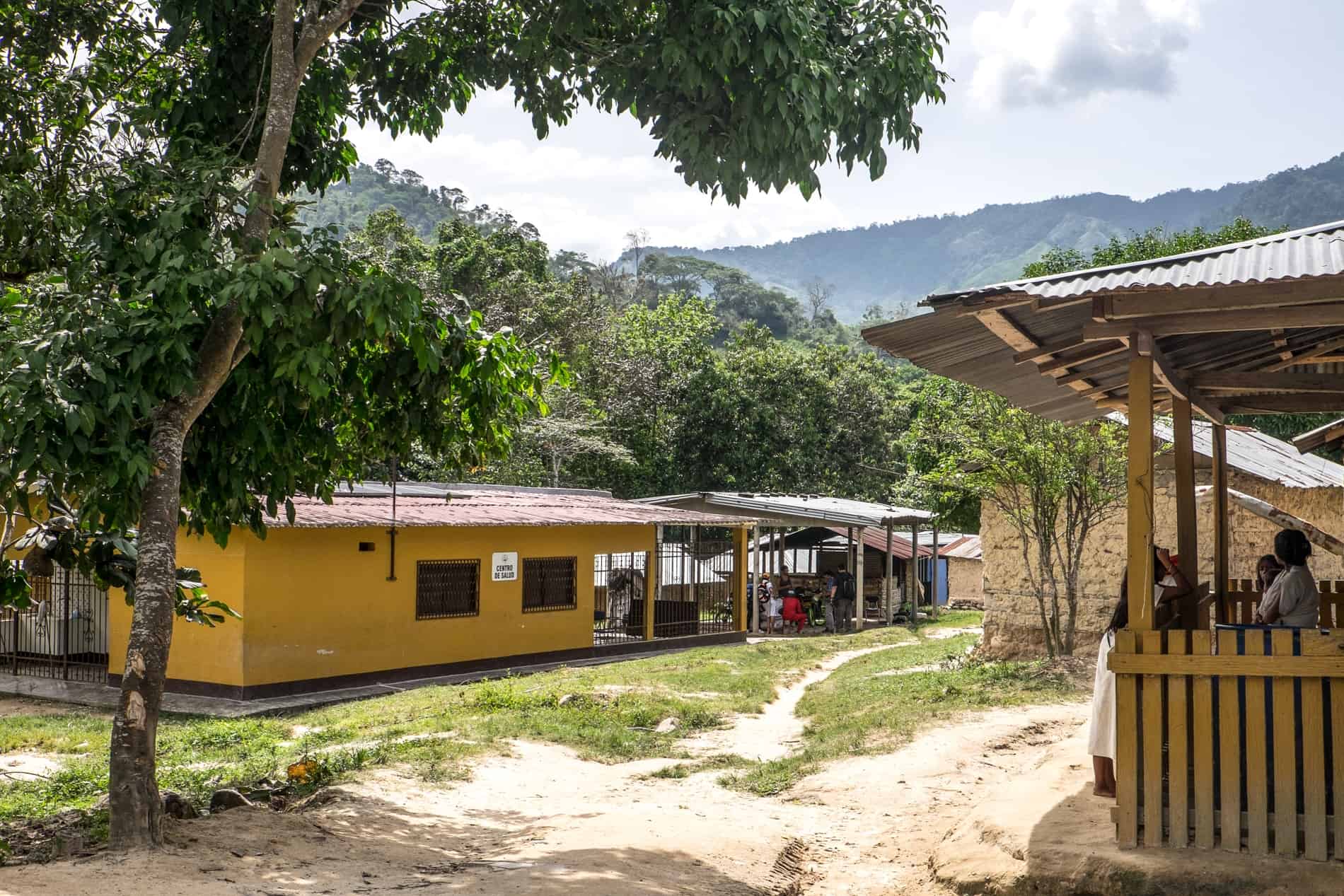
Is the Lost City Trek Difficult?
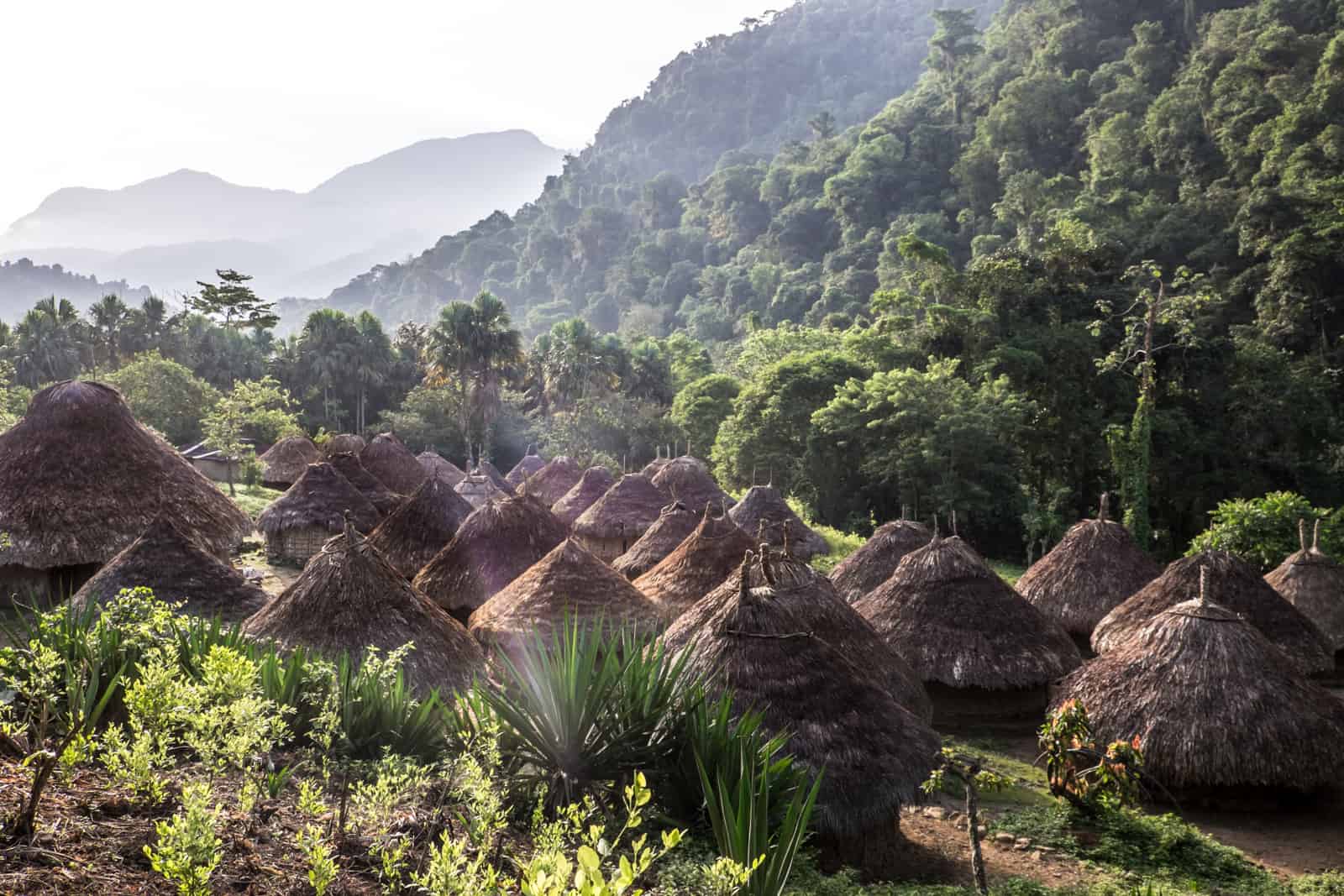
By the time the Spanish arrived in the 16th century, the Tayrona (an estimated one million people) was suspected to be at the edge of becoming a major civilisation in the Americas. At least 60% of them died from diseases brought over by the colonisers or died defending their land.
The Lost City has been given four names over the course of its discovery. The indigenous name, Teyuna, is alleged to be the name of the lord or the spirit of the city and the most precise name known to date. The ‘The Green Hell’ (‘Inferno Verde’) was given by the looters who first stumbled upon it in 1976, which started a battle for control in a remote area with disease and poisonous animals.
The Lost City trek in Colombia was a journey that took me from the urban pockets of the Caribbean coastline to the isolated jungle basin that wraps around the highest coastal mountain in the world at 5,778 metres above sea level.
Do I Need to Train for Lost City Trekking?
Our indigenous Wiwa guide leads the way.
The Lost City site was officially opened to visitors in 1981, but only by helicopter. Until the indigenous government said it was not allowed because, after nearly 15 years, they were landing on the main terrace and destroying it. Now, the only way in is a days-long trek, with their approval.
Lost City Trek Day-by-Day
Magnificence. La Ciudad Perdida (Lost City) is one of the most important cities in Colombia.
DAY 1. Starting the Lost City Trek
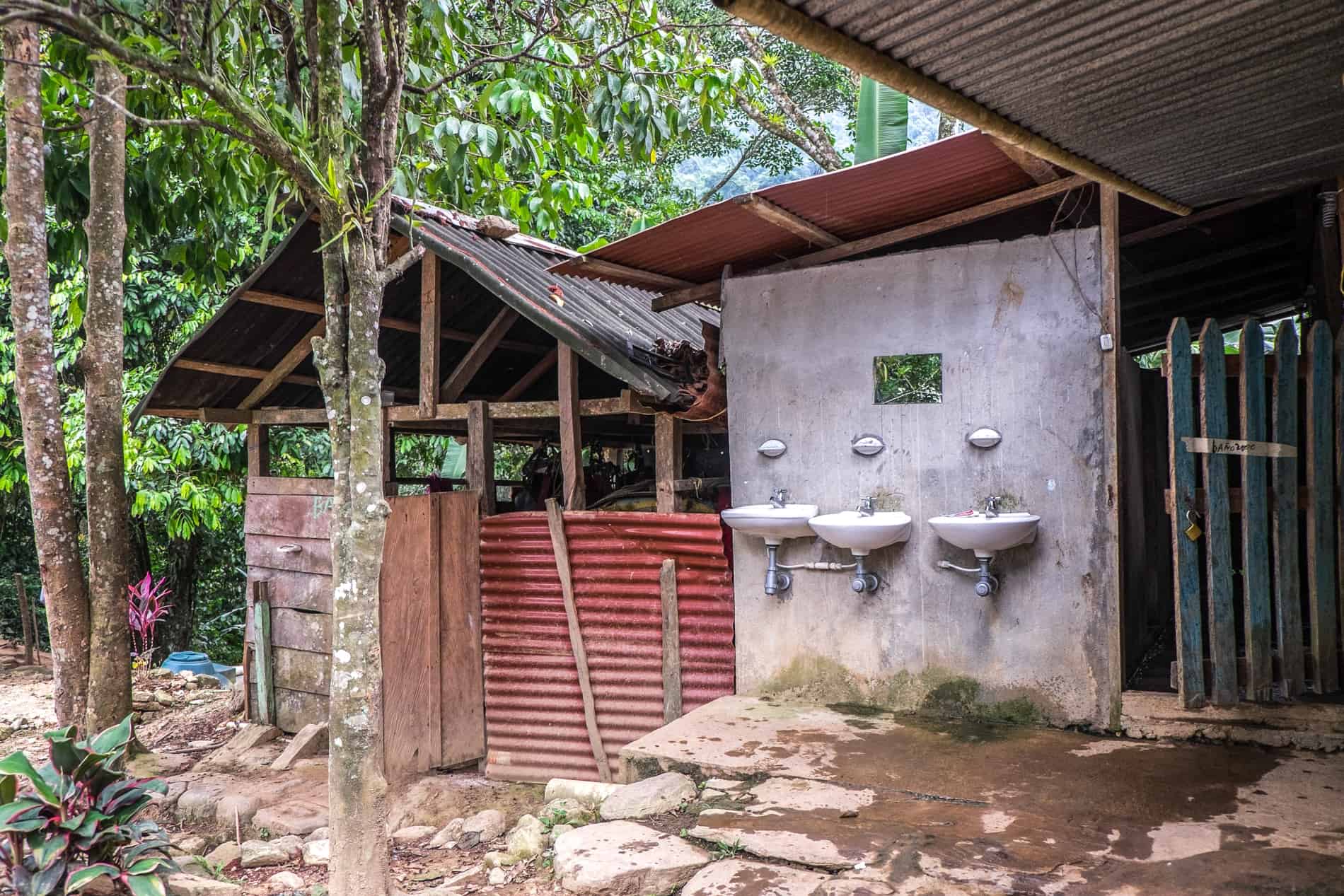
Despite knowing there was another trekking day ahead of us when we were already exhausted, we knew this final day was special. Leaving at 6 am, it was a two-hour steep climb into some farmland and another two hours wading through some deep, untouched jungle.
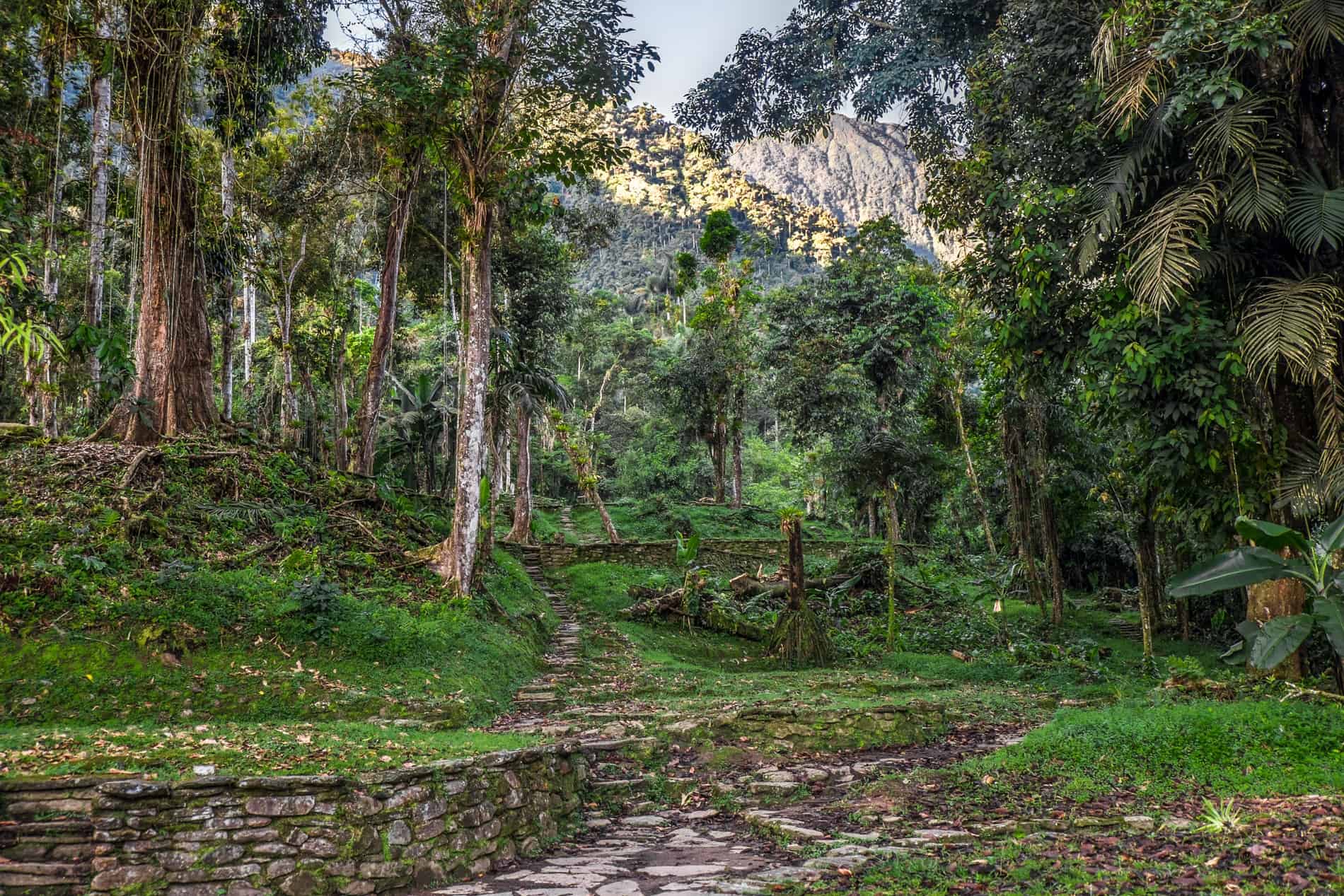
Gabo resting on the stone ruins of the Lost City site.
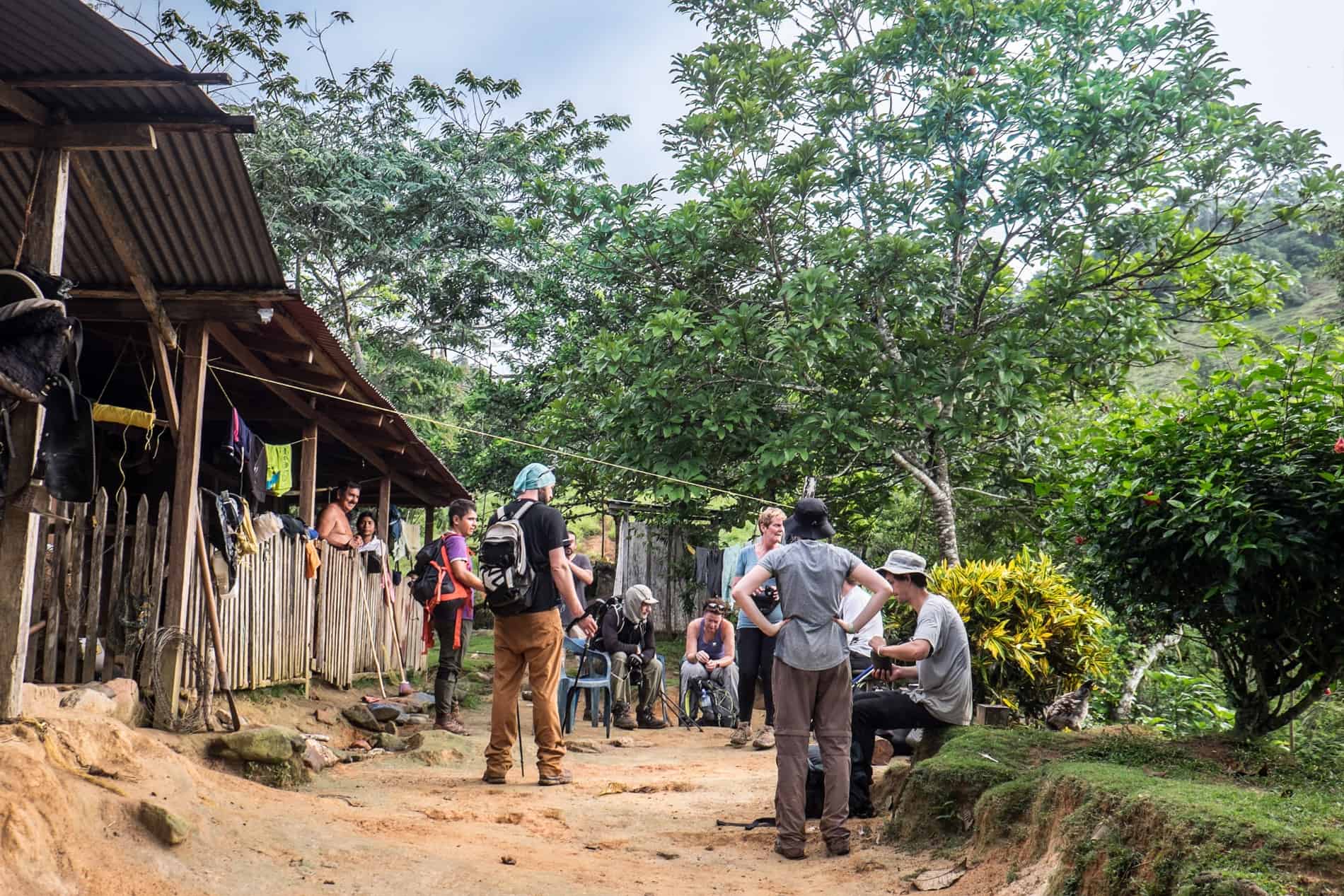
Last stretches of deep jungle trekking.
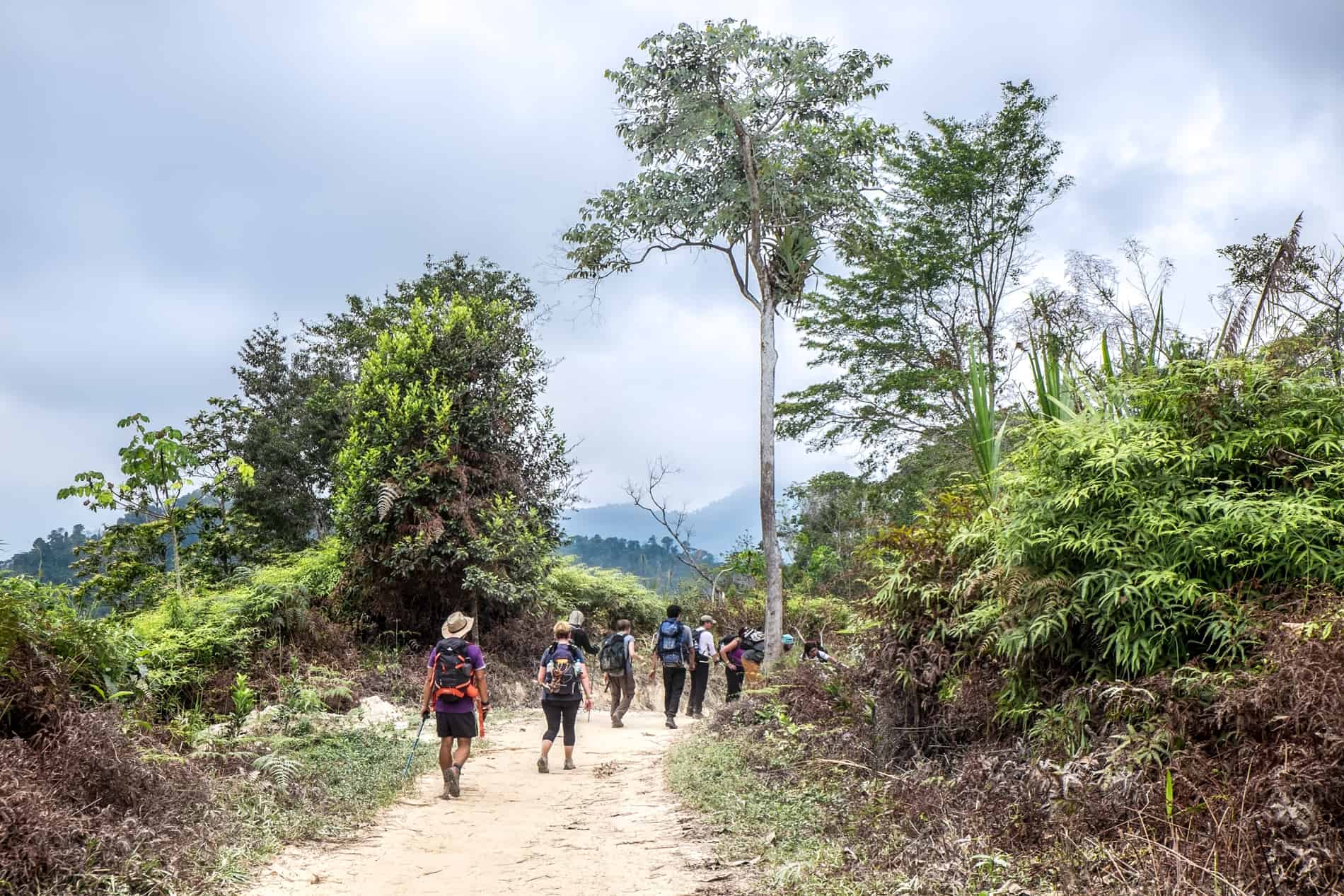
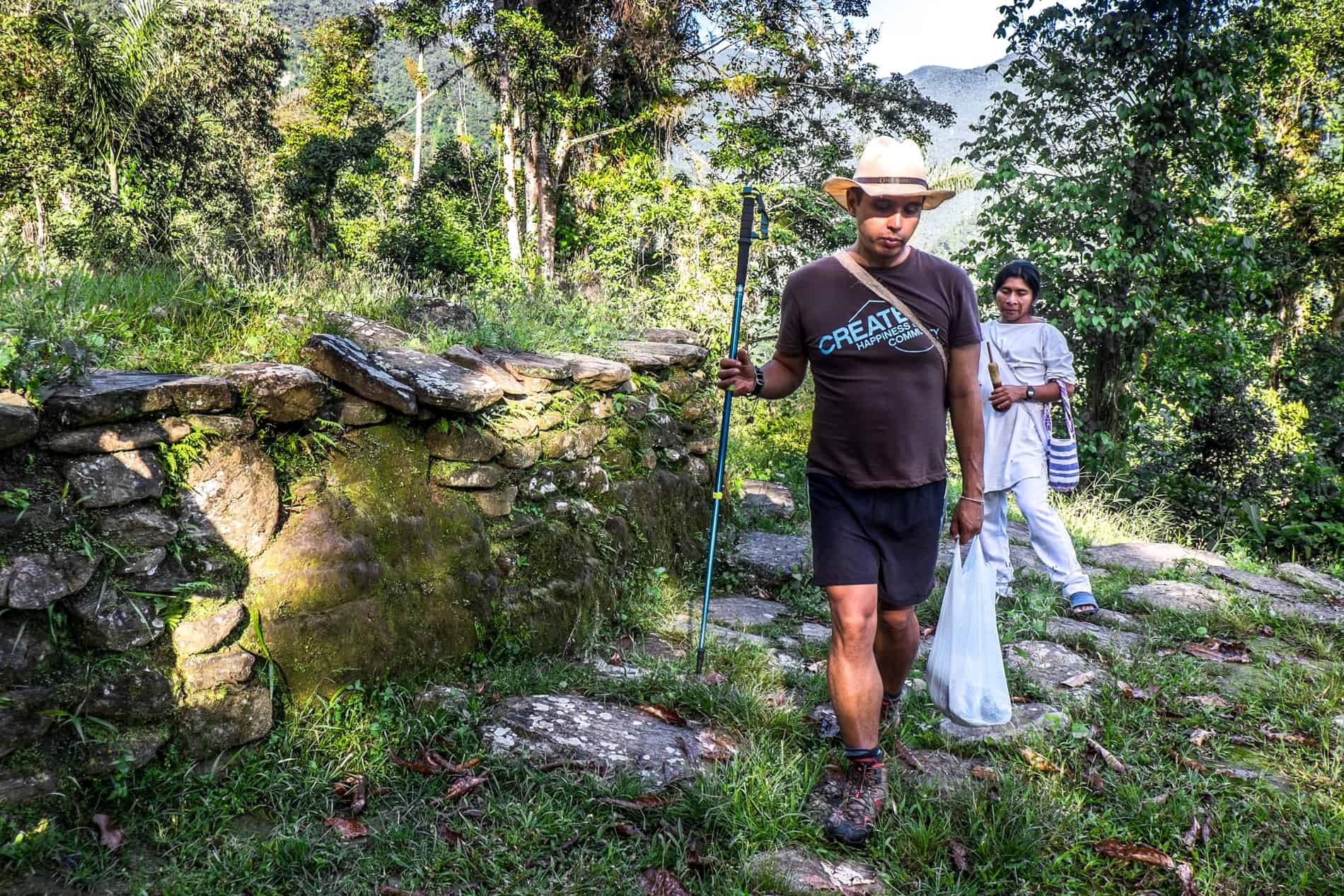
We were met by a Mamo (the spiritual leader of the community who keeps the natural order), who blessed us and tied a white ribbon around each of our wrists marking a rather emotional end to these arduous days.
DAY 2. The Long Walk to Lost City Base Camp
Day one of the Lost City Trek, leaving lowland villages and working our way up into the peaks.
Map of Colombia Lost City Trek – The Route With G Adventures
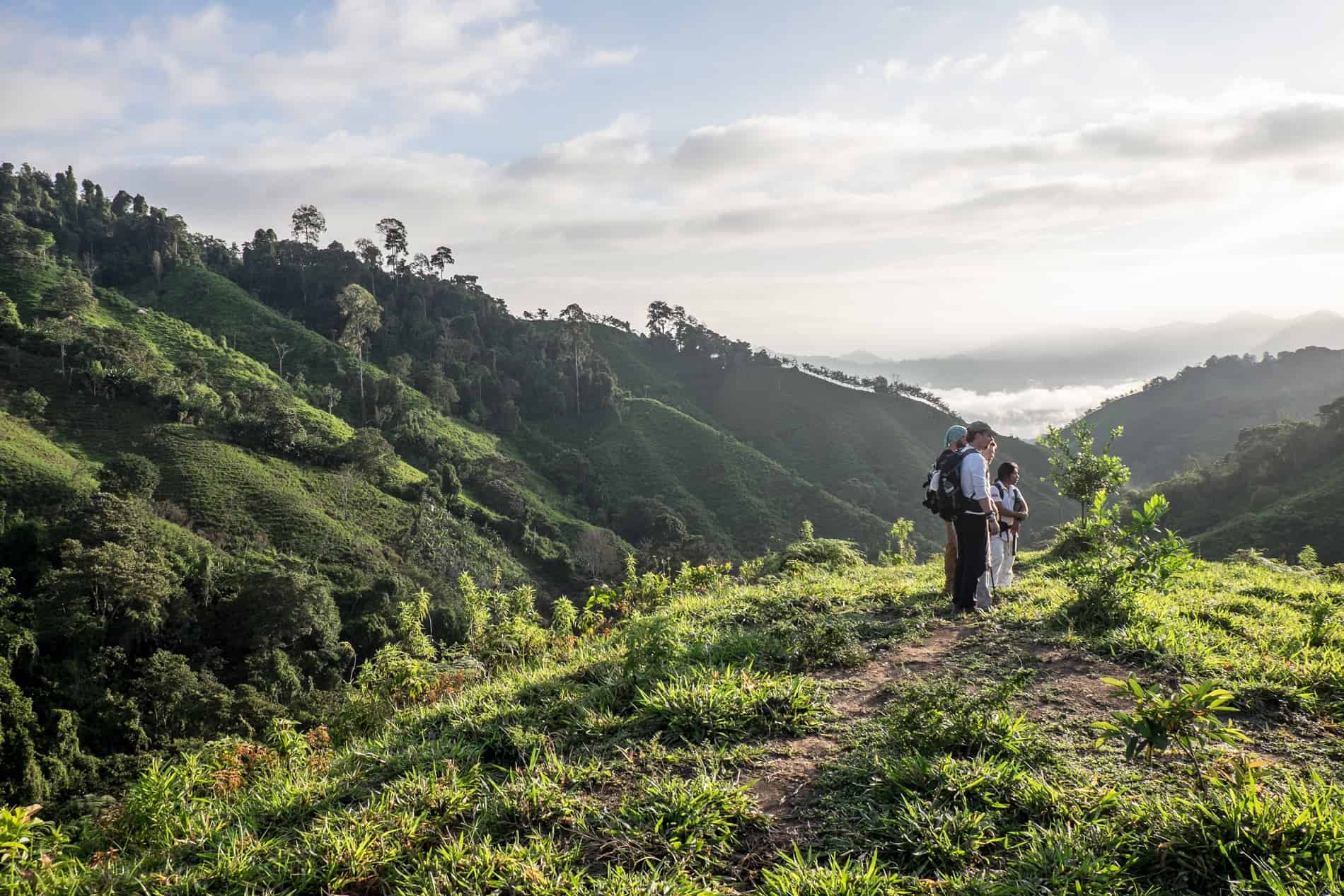
However hard it is to get there.
Dense Jungle tracks make up much of the Lost City trail.
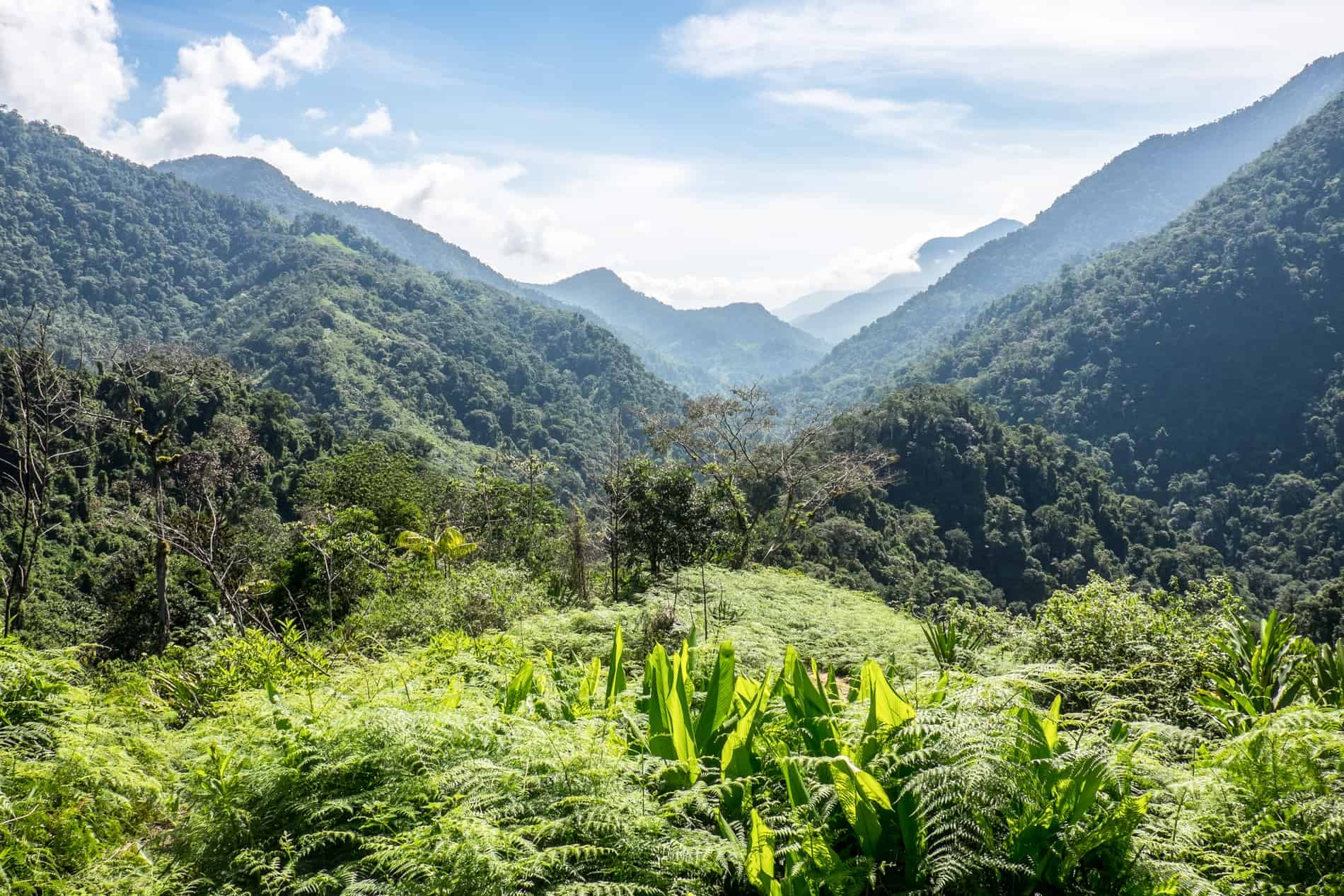
 Donkey mules between the Lost City camps.
Donkey mules between the Lost City camps.
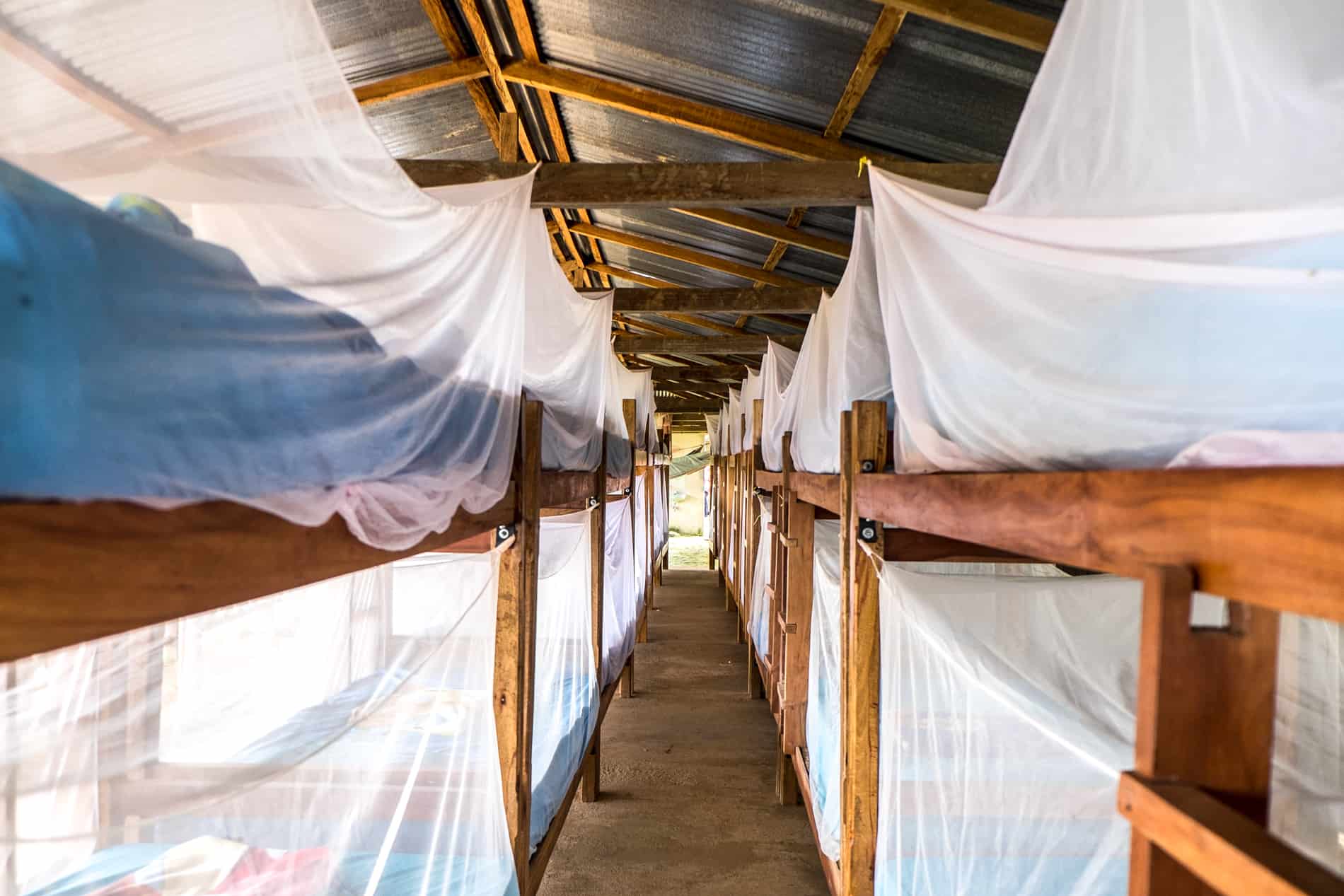
Lost City trek campsite dining room.
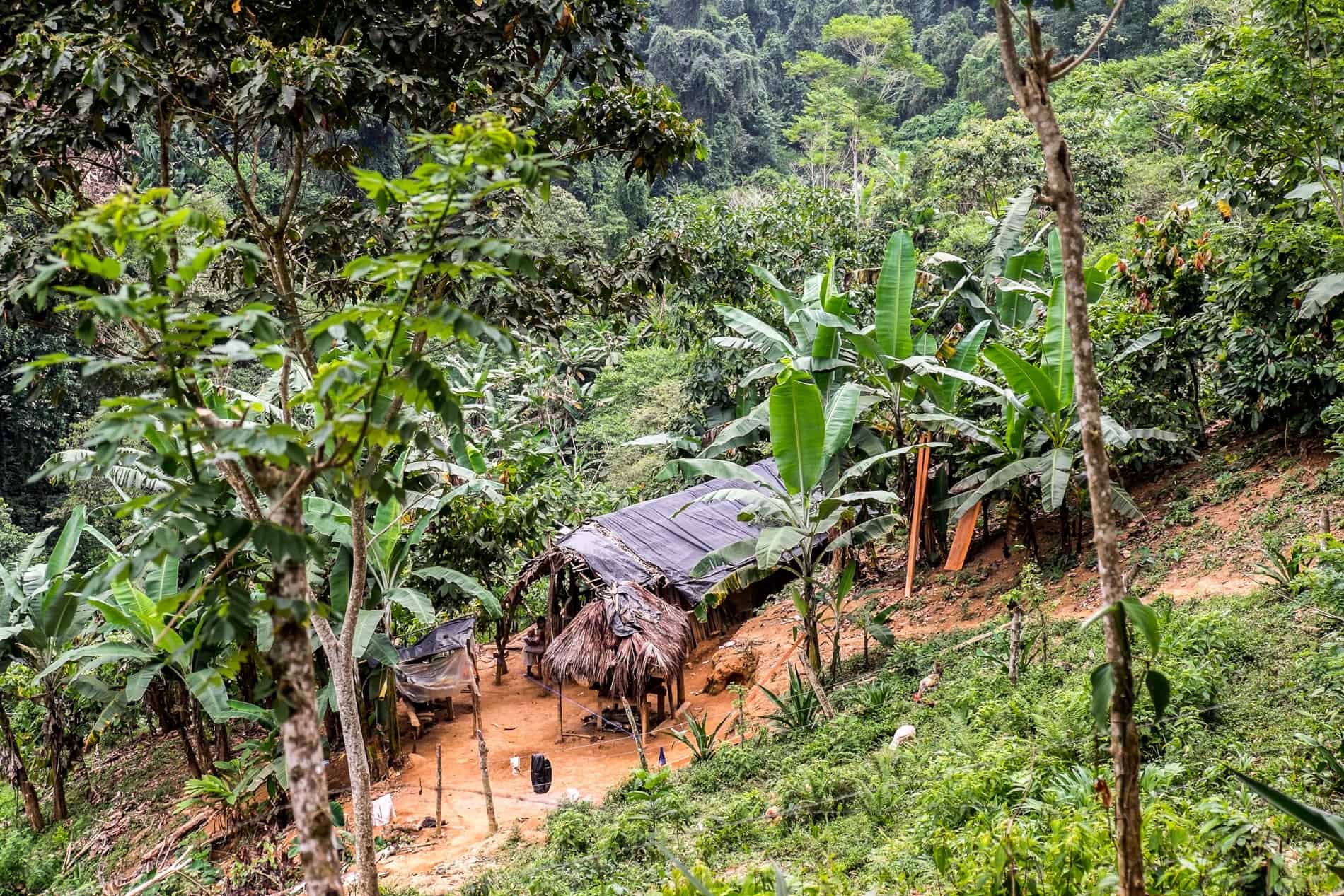 We start walking at 8 am, stopping after a couple of hours at a rest stop set up by a guy whose income rests on squeezing fresh orange for weary, already sweaty trekkers. This trail continues, leaving the farmland and entering the terrain of indigenous villages where around 80 families, mainly Kogui and Wiwa, reside.
We start walking at 8 am, stopping after a couple of hours at a rest stop set up by a guy whose income rests on squeezing fresh orange for weary, already sweaty trekkers. This trail continues, leaving the farmland and entering the terrain of indigenous villages where around 80 families, mainly Kogui and Wiwa, reside.
DAY 3. Arriving at the Lost City.
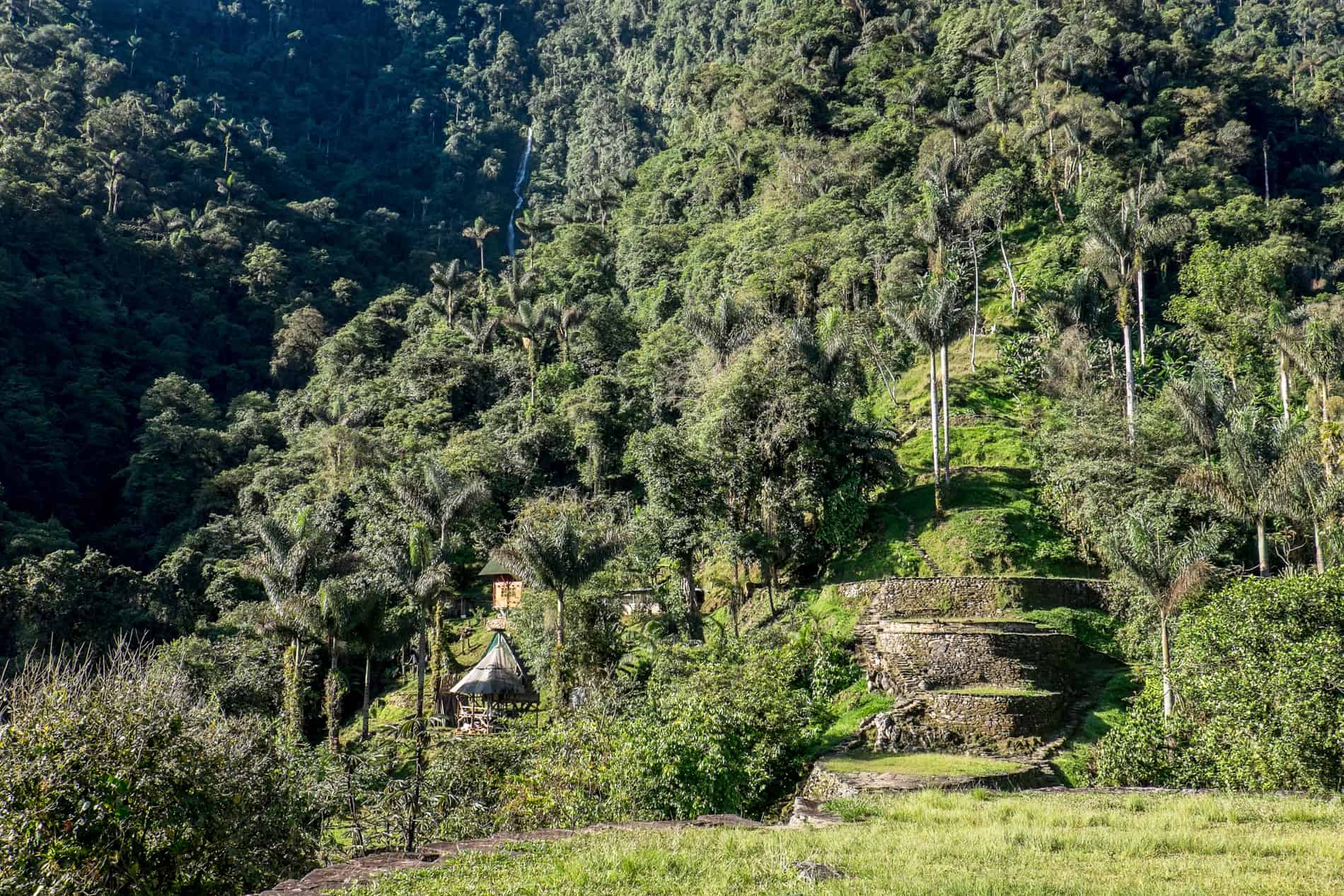
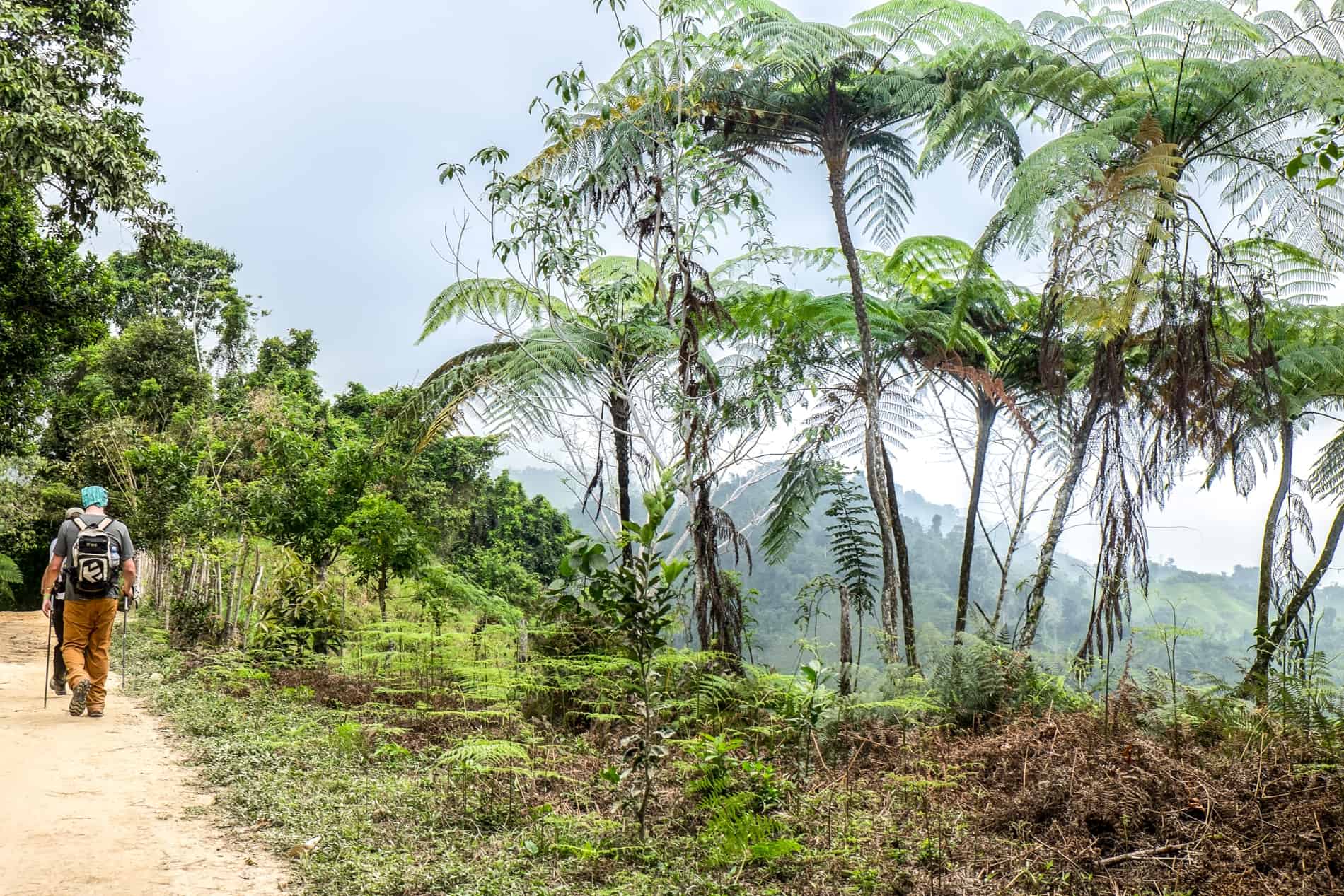
The stone pathway to the elevated view of the Lost City terraces.
The total distance of the trek to and from the Lost City site is 45km, using the same jungle path. It’s estimated that if you factor in the steep uphill and downhill climbs along this route, in both directions, the total distance is around 1.5 times this, meaning you will rack up closer to 65-70km trekking here.
Getting off track on the extra Lost City trek day, crossing hilltop farmland.
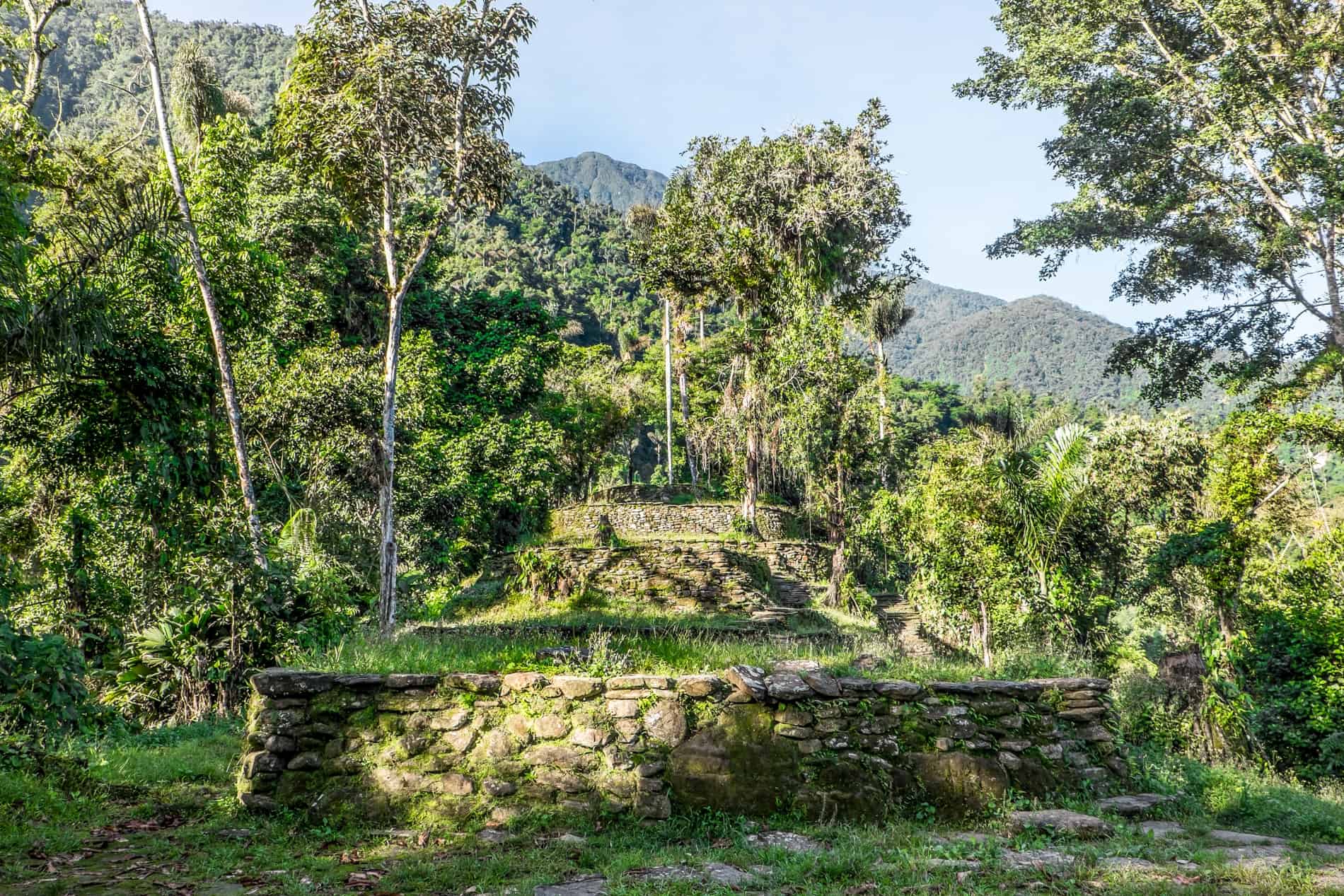
You can expect to pay in the region of 0 for the basic four-day trek package and from 0+ for packages up to six days, including accommodation in Santa Marta. Usually, the same price applies for four, five or six days with the same company.
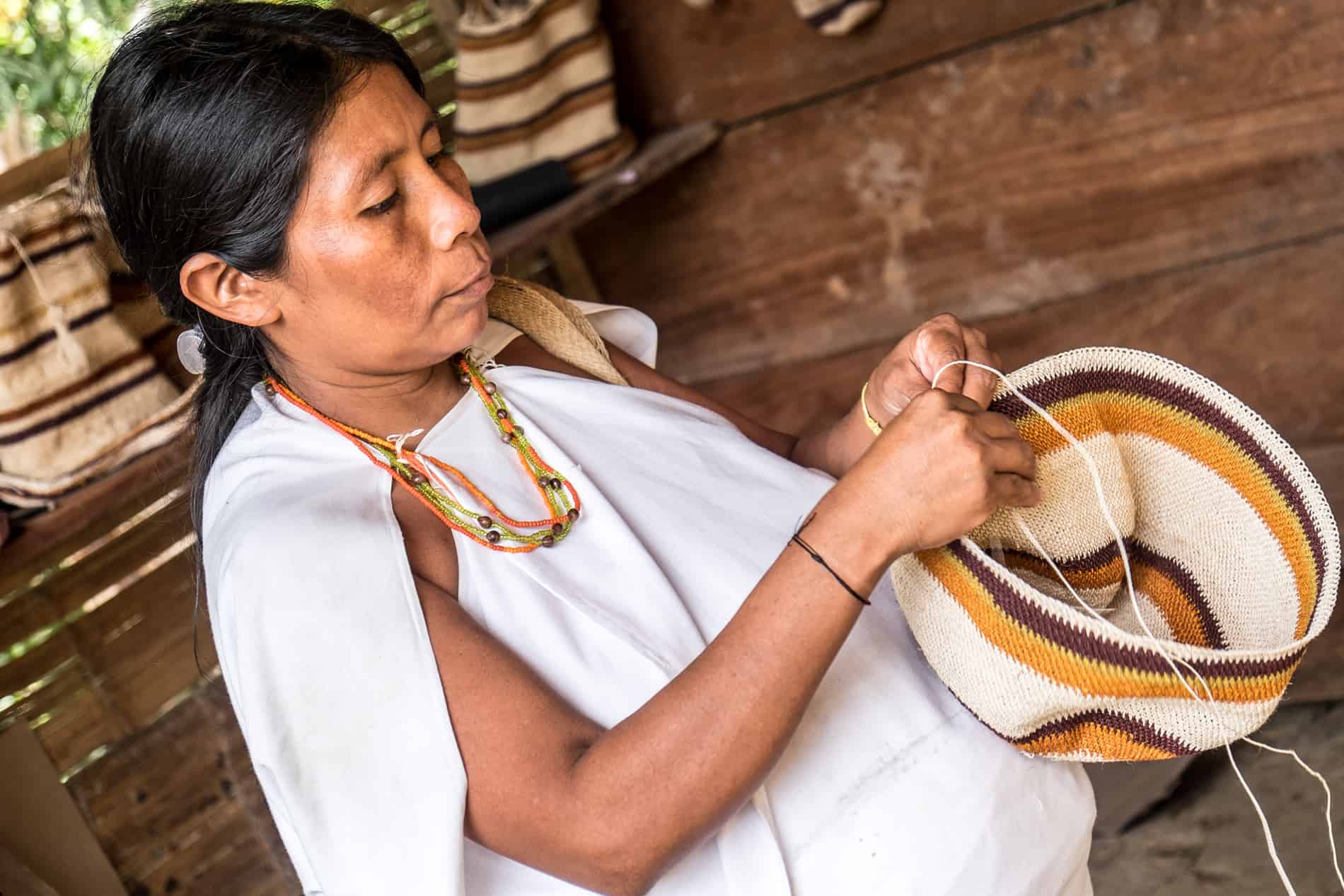

Disclaimer: This post contains affiliate links to handpicked partners, including tours, gear and booking sites. If you click through or buy something via one of them, I may receive a small commission. This is at no extra cost to you and allows this site to keep running.
DAY 4. Leaving the Lost City Trail.
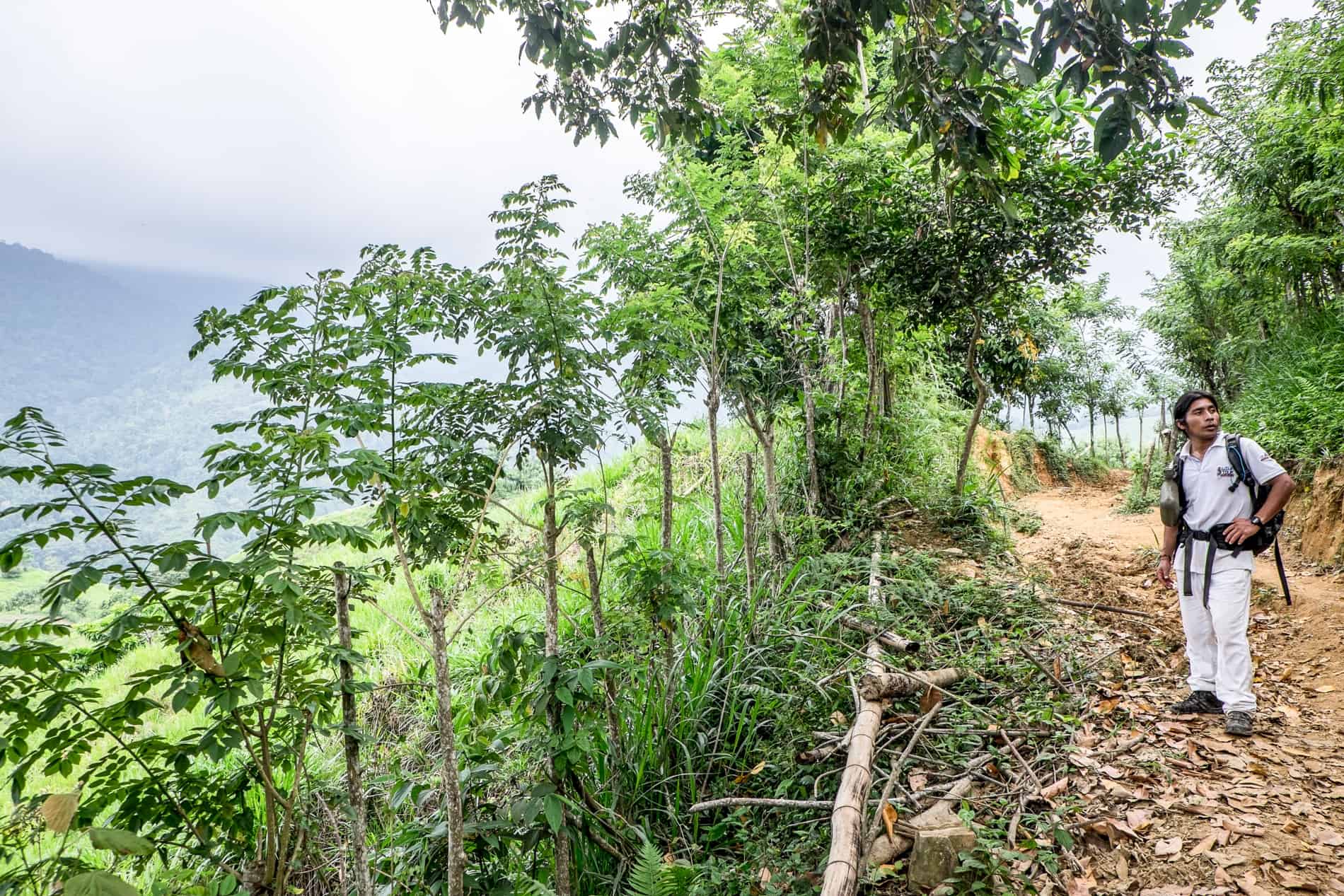
Ciudad Perdida treks run all year round, but seasons can affect the terrain.
The standard trek is four days, although some companies offer shorter three-day options and longer options up to six days, where you rest for longer at some of the camps.

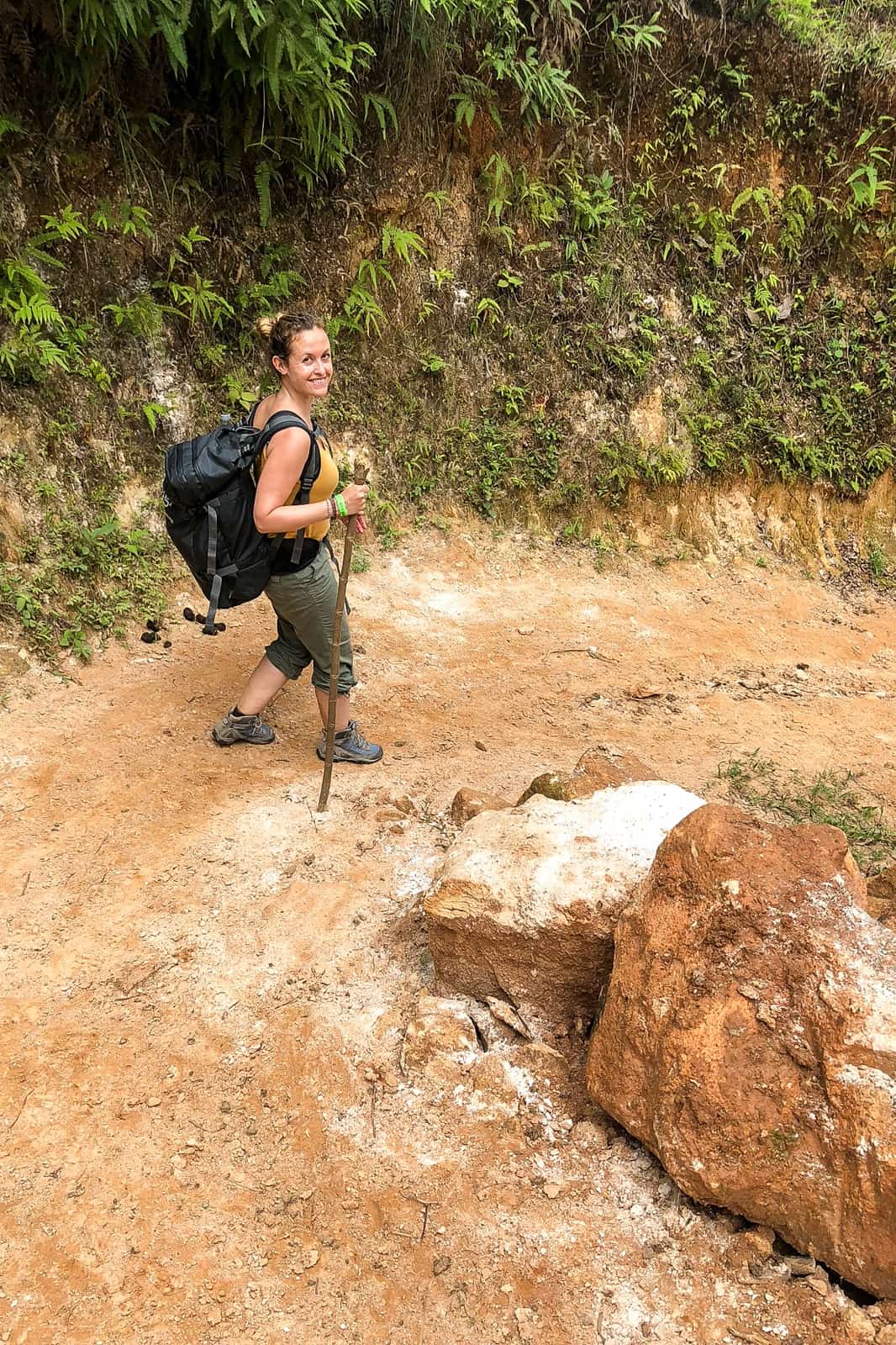
An Indigenous guide and an English-speaking guide will accompany you the entire trip. The Lost City Trek Itinerary looks like this:
Day 5. Exclusive Trekking Excursion to Wiwa Community.
The reason this trek isn’t longer than four days there and back is that you are not having to battle with extreme altitude, unlike the set-up with other multi-day treks in mountainous regions like the Everest Base Camp trek or climbing Kilimanjaro, which have a similar distance but strategic rest days for high altitude acclimatisation.
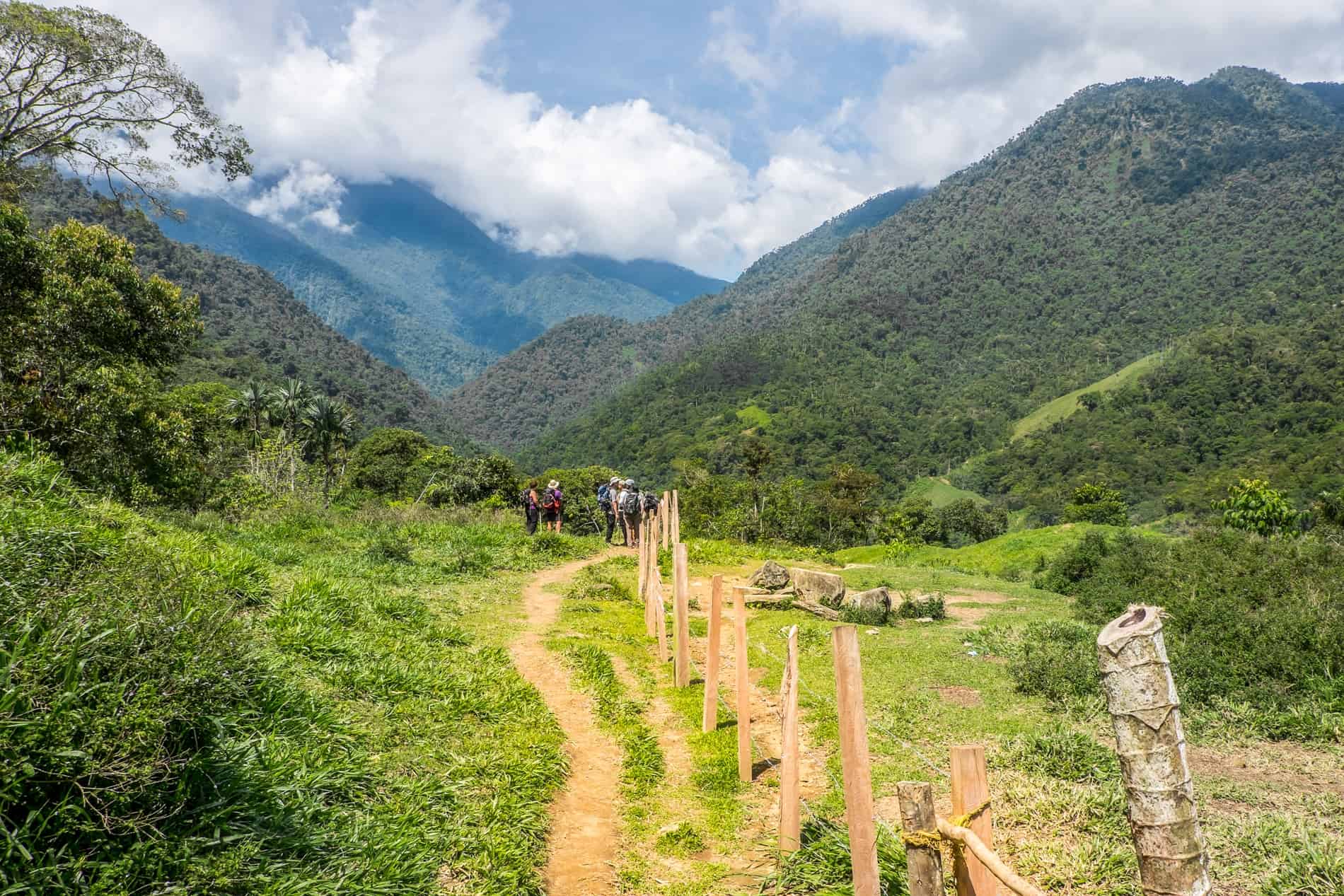
Related
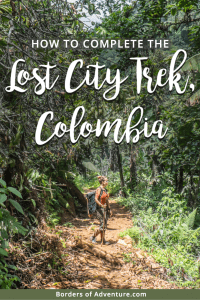
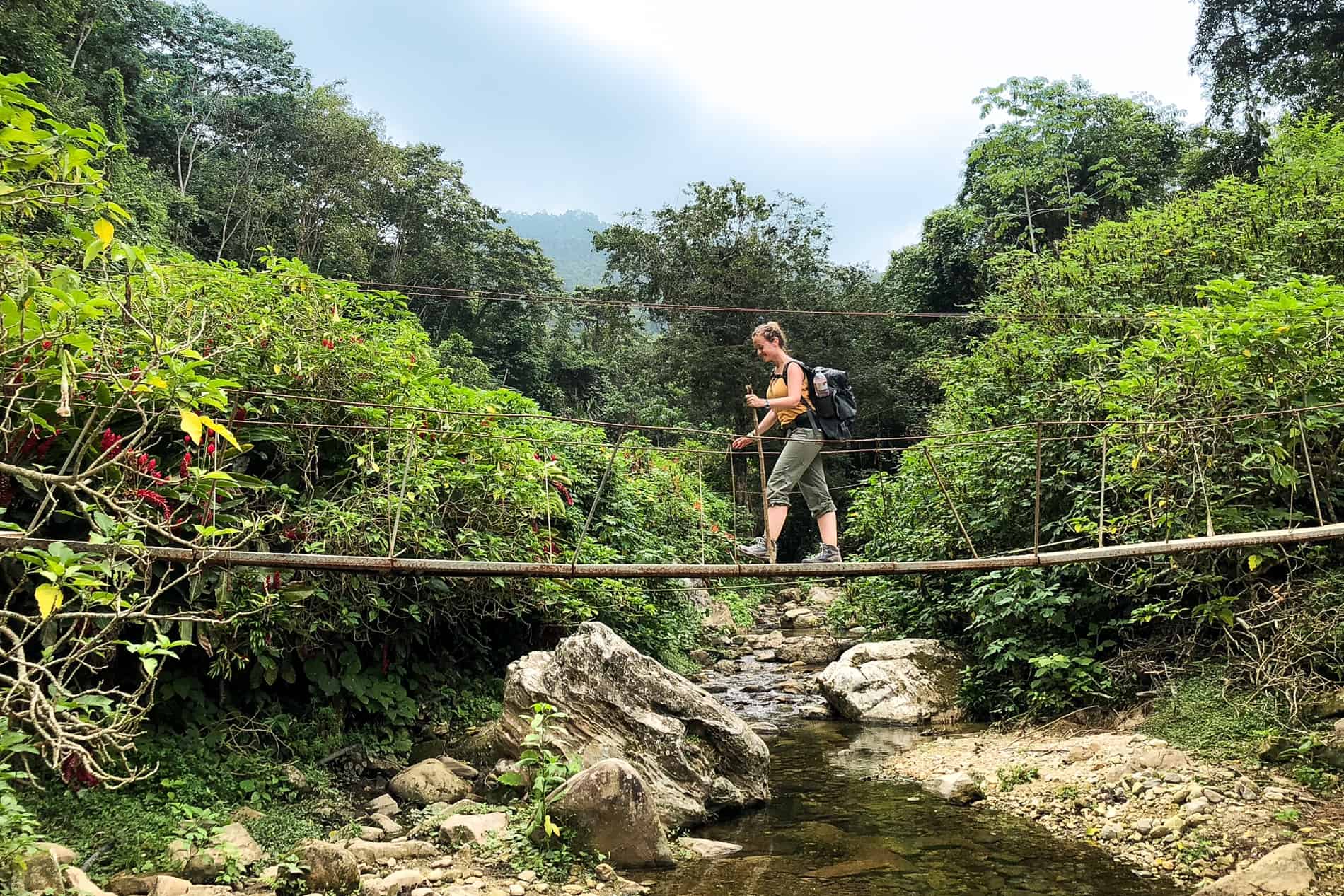
Trekking Time: 6-7 Hours
Today, it remains a permanent archaeological area with archaeologists using the knowledge from the Kogui and Wiwa people, said to be direct descendants or at least related to the Tayrona, to fill the gaps in the story. Outsiders trek to Cuidad Perdida in search of them.
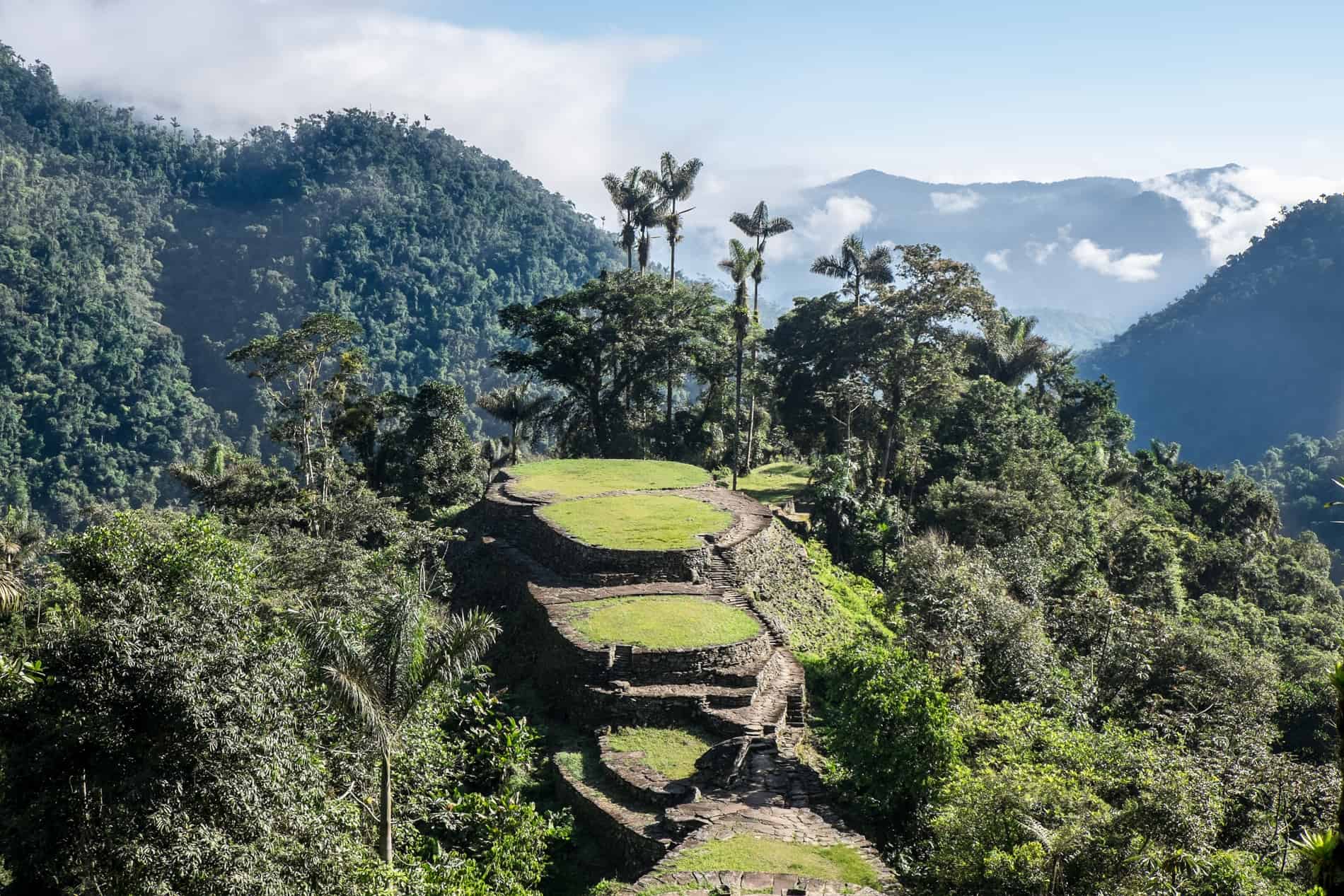 Meeting the Mamo of the Wiwa Village.
Meeting the Mamo of the Wiwa Village.
You need to be in good physical fitness for this trek. If you train regularly in some fitness activity, you will have a good basis for strength and recovery.

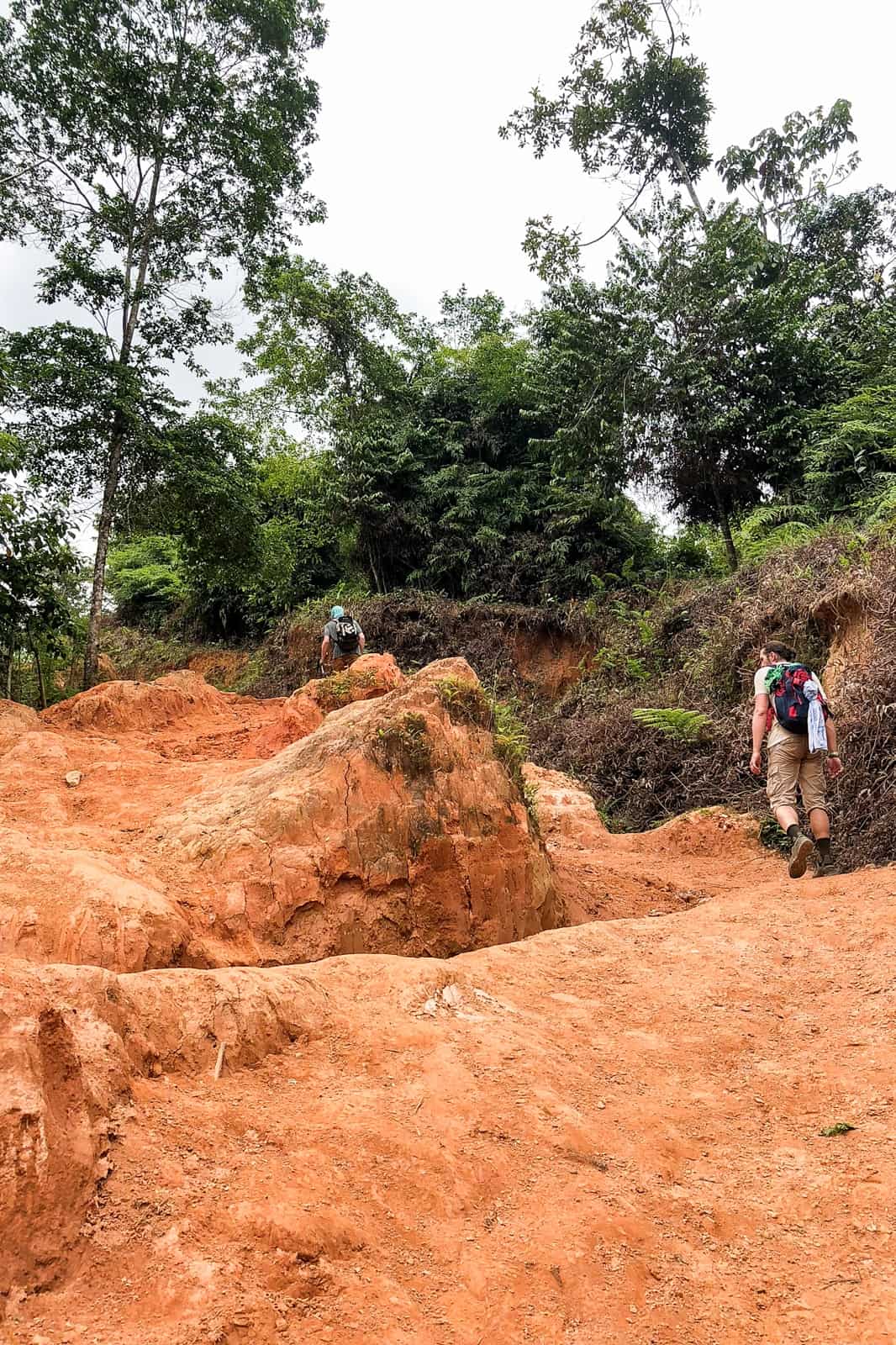

The jungle is humid, so it’s important to try to keep all your belongings dry otherwise you will just is uncomfortable, miserable and chilly. Washing something at the end of the day and it being dry by the morning are slim. Even our dry clothes felt damp in the morning. We were given a black garbage/bin bag to ensure our bag stayed dry and I also have a small 10-litre dry bag with me to protect my electronics, which fit neatly into my daypack.
Pack light for the Lost City Trek.
It is here that G travellers enjoy their last lunch together at the restaurant that has been established here as part of the project before the two-hour jeep ride back to Santa Marta.
What to Pack for Lost City Trekking
Typically what is included in the trek cost of the Lost City Trek is:


Clothing for Lost City Trekking
- Two trekking t-shirts, and one pair of trekking pants (quick-dry material is better). This was the advice in order to pack light and be wearing half of what you take! Often people pack two tops, one pair of long pants and a pair of shorts. If you are prone to mosquito bites, like me, ditch the shorts and keep covered.
- A light waterproof jacket for potential late afternoon showers in the wet season. You don’t need a down jacket or a heavy Gore-Tex jacket, as you will be sweltering in jungle humidity.
- I took a light pair of Pyjama bottoms so that I slept in something cool and clean in the evenings. A pair of leggings would also serve the same purpose.
- A light mid-layer jacket used for the times it can get a little chilly in the evenings. I always feel the cold, so this isn’t essential for everyone.
- Good fitting and already broken-in trekking shoes are essential, especially when you are walking on steep uphill and downhill terrain. I’ve had my trekking shoes for a couple of years now so they are well worn in.
- Flip flops or sandals to change into at the end of the day and for use in the shower.
- Underwear, because you want something to feel clean! Enough to last as things don’t dry very quickly overnight.
- Bikini/swim trunks, since there are plenty of waterfalls and water spaces along the trek which makes for a relaxing cool-down after a hard day of trekking.
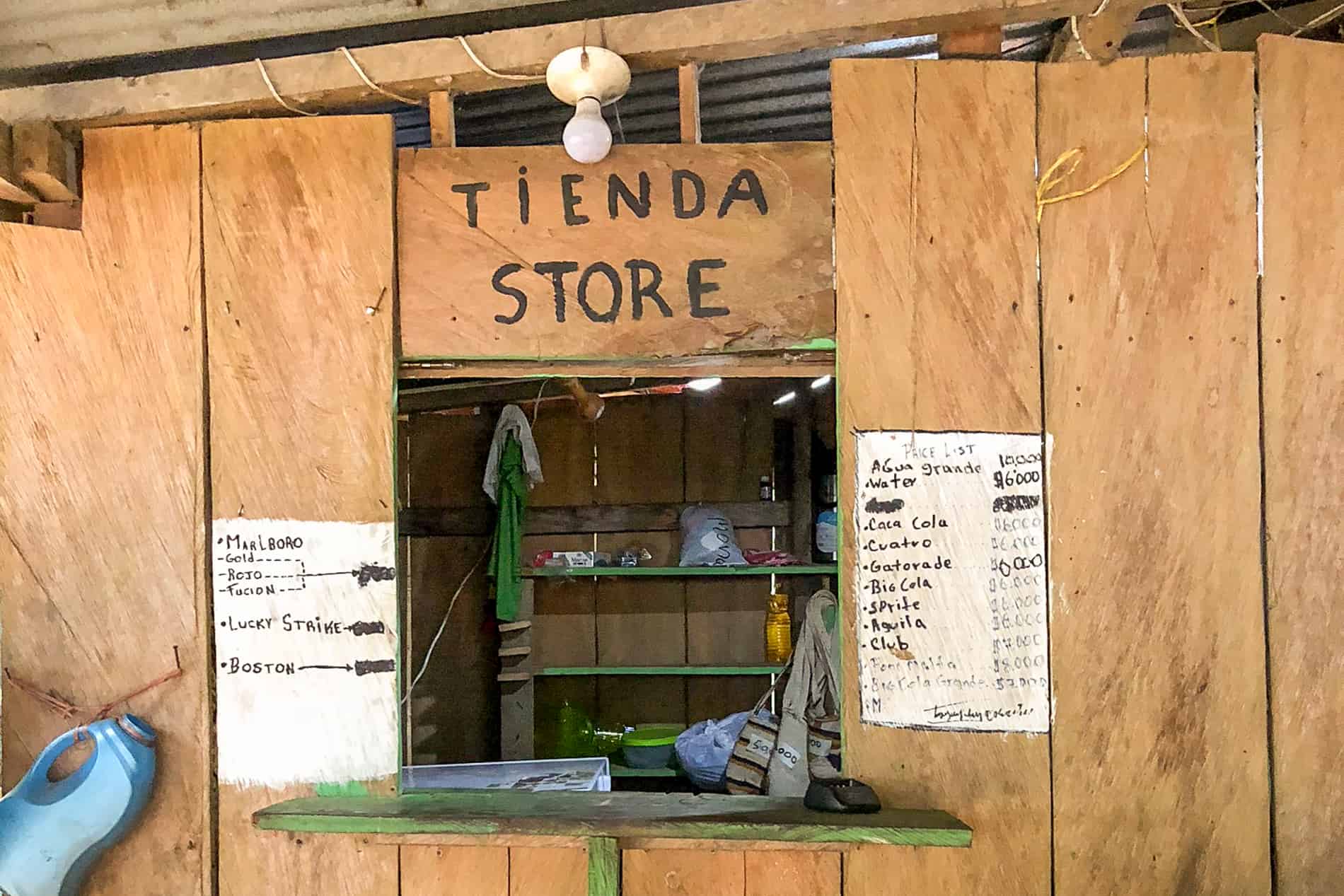
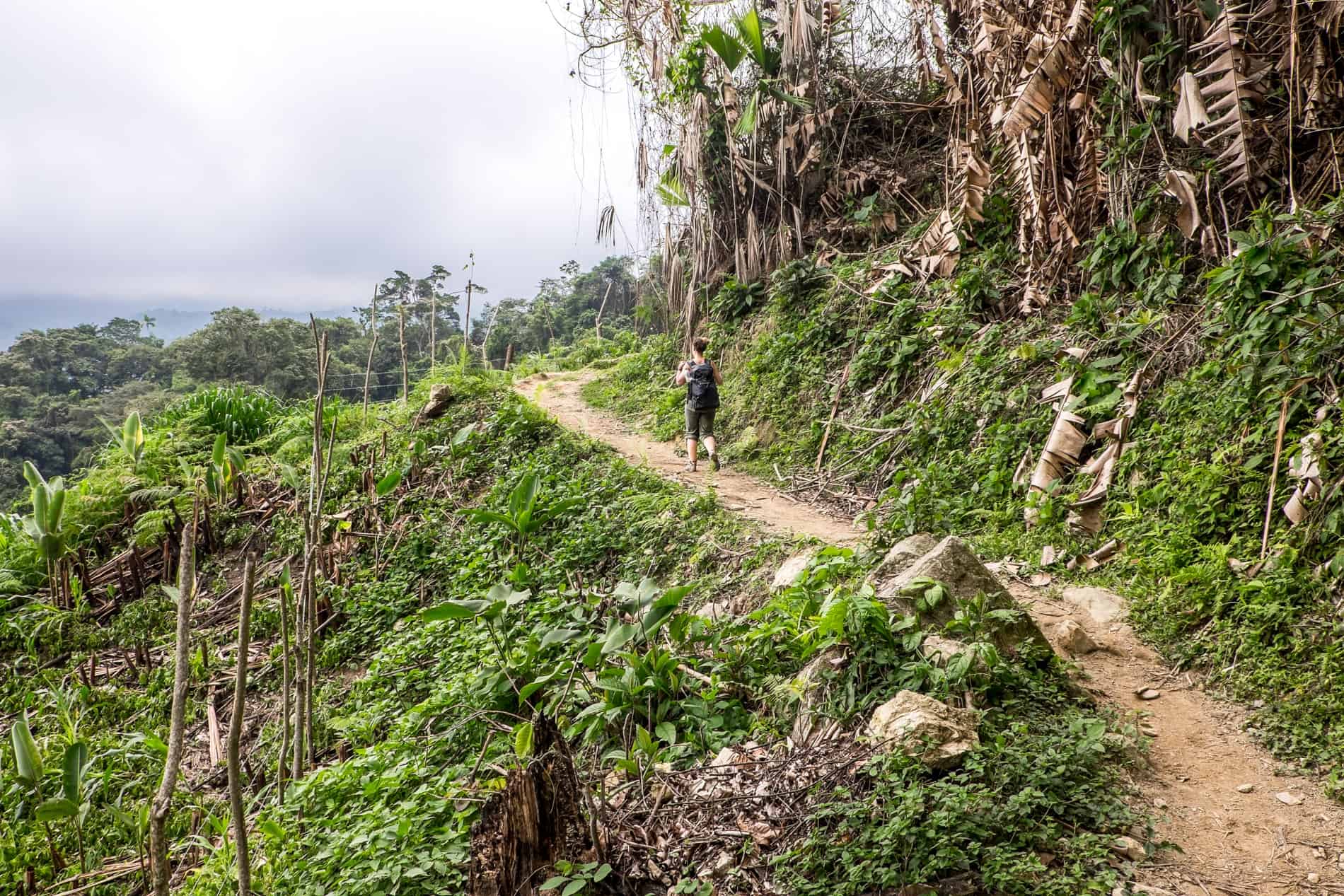
Trekking Equipment
- One 20 or 30-litre daypack and better if it has various compartments so you can separate your things and be able to get to more essential items like mosquito spray and water quickly.
- Walking Sticks are a perfect means to balance and keep control on difficult parts of the trek. I don’t usually use walking poles on a long trek but I wish I had brought at least one walking pole for the Lost City Trek. I got lucky that my Wiwa guide went to the jungle and found me a solid stick that I used from beginning to end. It saved me on a couple of bumpy areas and losing my balance on the loose ground many times.
- Bin liner or dry bag to keep all clothing and electronics dry.
- Headlamp for use at the camps. Electricity and lighting are turning off around 8-9 pm.
- Refillable water bottle. Each trekking group normally has its own water tank assigned at each camp.
- Microfibre towel. You will want to shower every afternoon when arriving at camp and quick dry material is the best option, and microfiber also saves space.
Toiletries
- Mini-sized or sachets of shampoo and shower gel. I had an anti-mosquito liquid that could be used as a hair, body and shower gel. I purchased a sachet of hair conditioner at the pharmacy in Santa Marta.
- Toothbrush and small toothpaste tube (lucky for us we were near the end of a regular tube so was able to save space).
- Decent mosquito spray bought locally. Most of the high deet sprays from home not only don’t work well here, but deet is bad for the environment. Get yourself some Nopikex Mosquito Repellent from a pharmacy in Santa Marta before you leave.
- Sun cream lotion. Because you are on the Caribbean coast after all, and despite some jungle cover, there is a lot of sun exposure.
- Do I need to bring enough toilet paper for the entire trek? It’s wise to bring a small amount and not an entire roll as all the camps are equipped, but can easily run out late into the evening.
- Regular medications, because you can’t purchase anything on the trek. For example, I always have to carry two asthma inhalers. I always carry painkillers too for situations like dehydration headaches and muscle pain.
- Rehydration salts or dissoluble tablets. I used these in water every day to ensure I had extra electrolytes.
Electronics and Extras
- Camera and Phone. There’s no WiFi out here, so enjoy the digital detox. But for some their phone is their main camera, and it also serves as a good torchlight.
- Fully charged power banks. We had two fully charged power packs between us and I took two fully charged camera batteries. Space limitations mean not being able to carry a huge bundle of individual chargers.
- Money for buying drinks and snacks. Every camp has a mini snack store with soft drinks, well-deserved beers, chocolate, and other snacks. Expect to pay 4,000 – 5,000 (up to $2) for a drink.
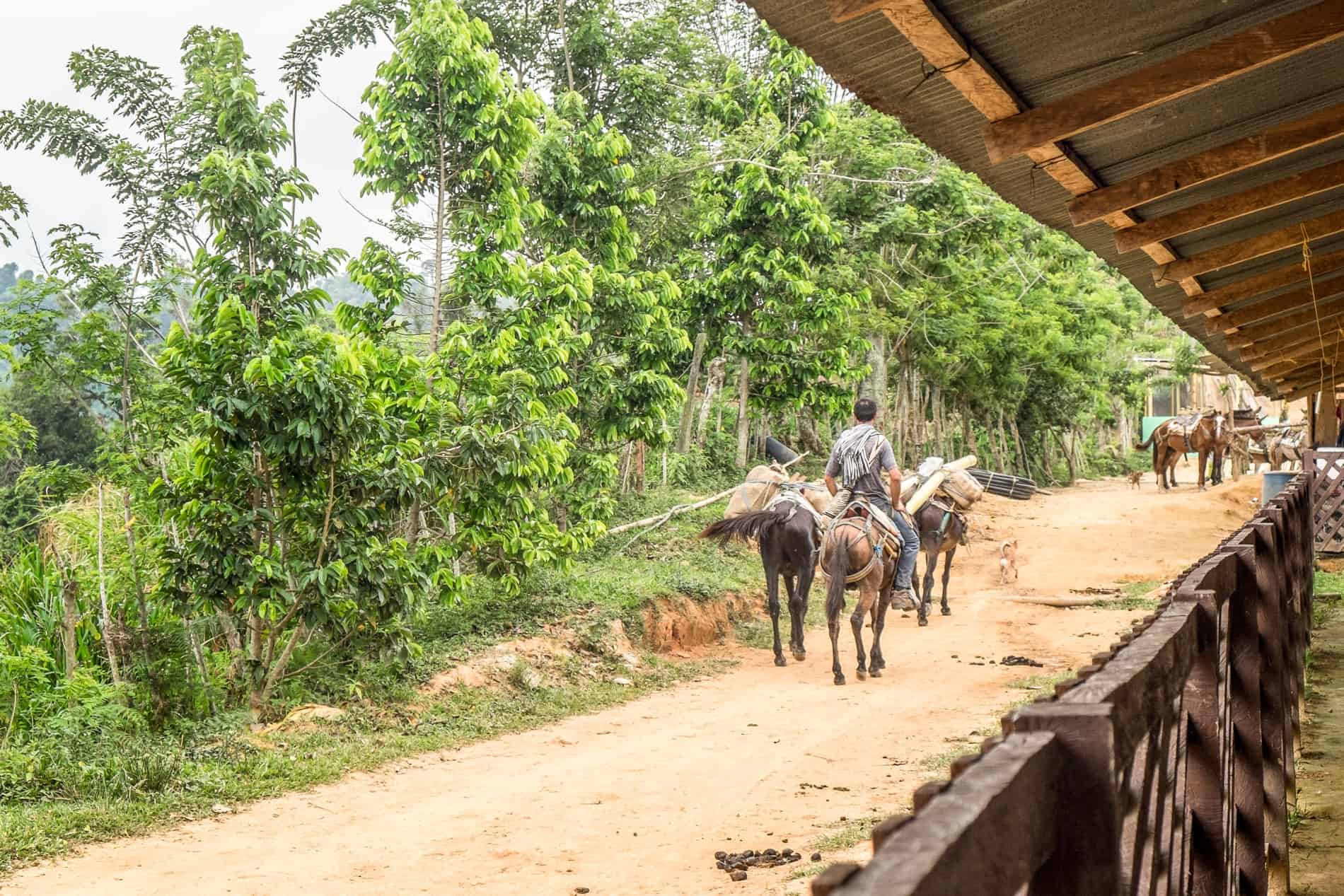
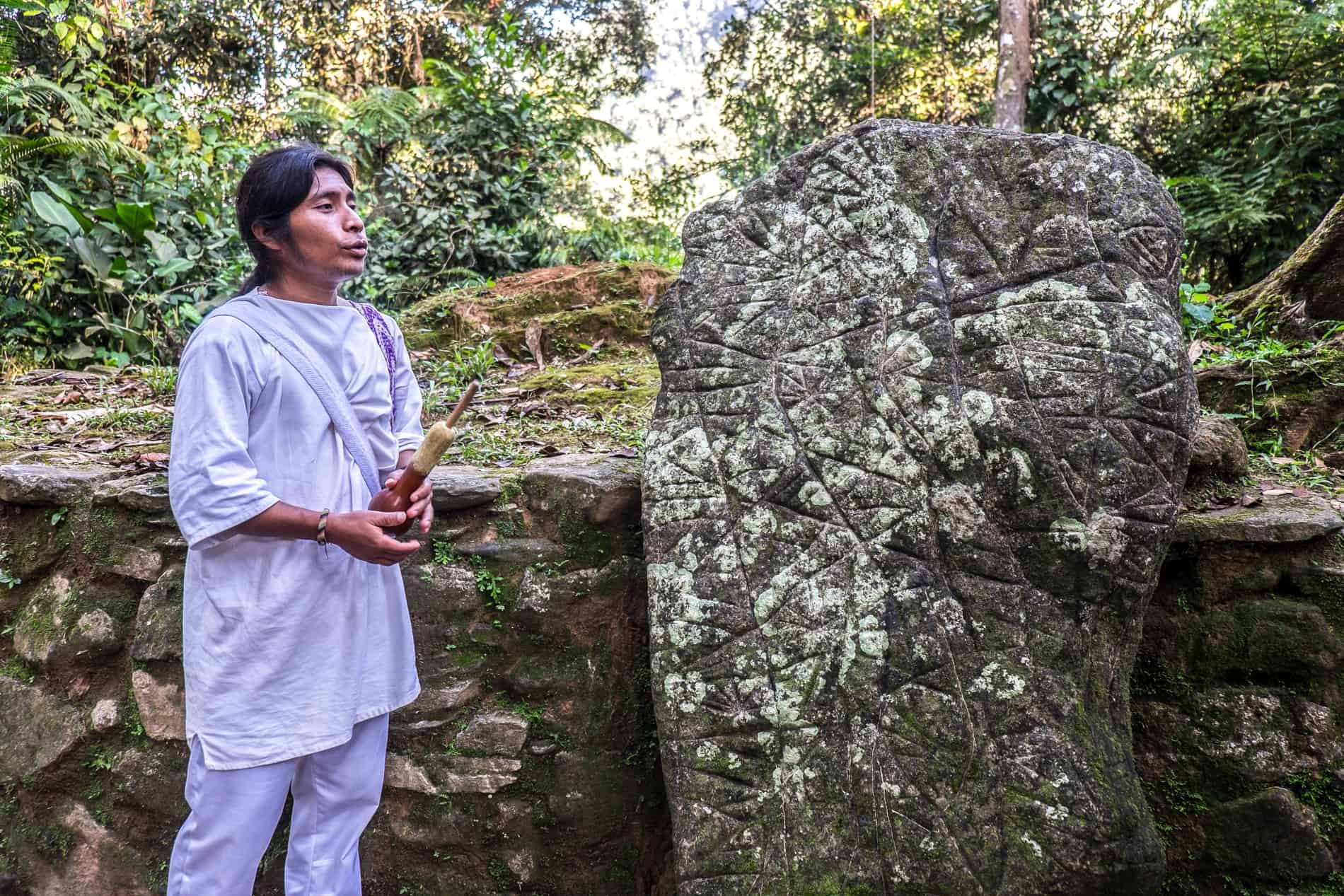
That we certainly did on what is arguably one of the best treks in South America.
Thinking of Trekking to the Lost City? Pin It!
The fresh orange juice rest stops along the way.
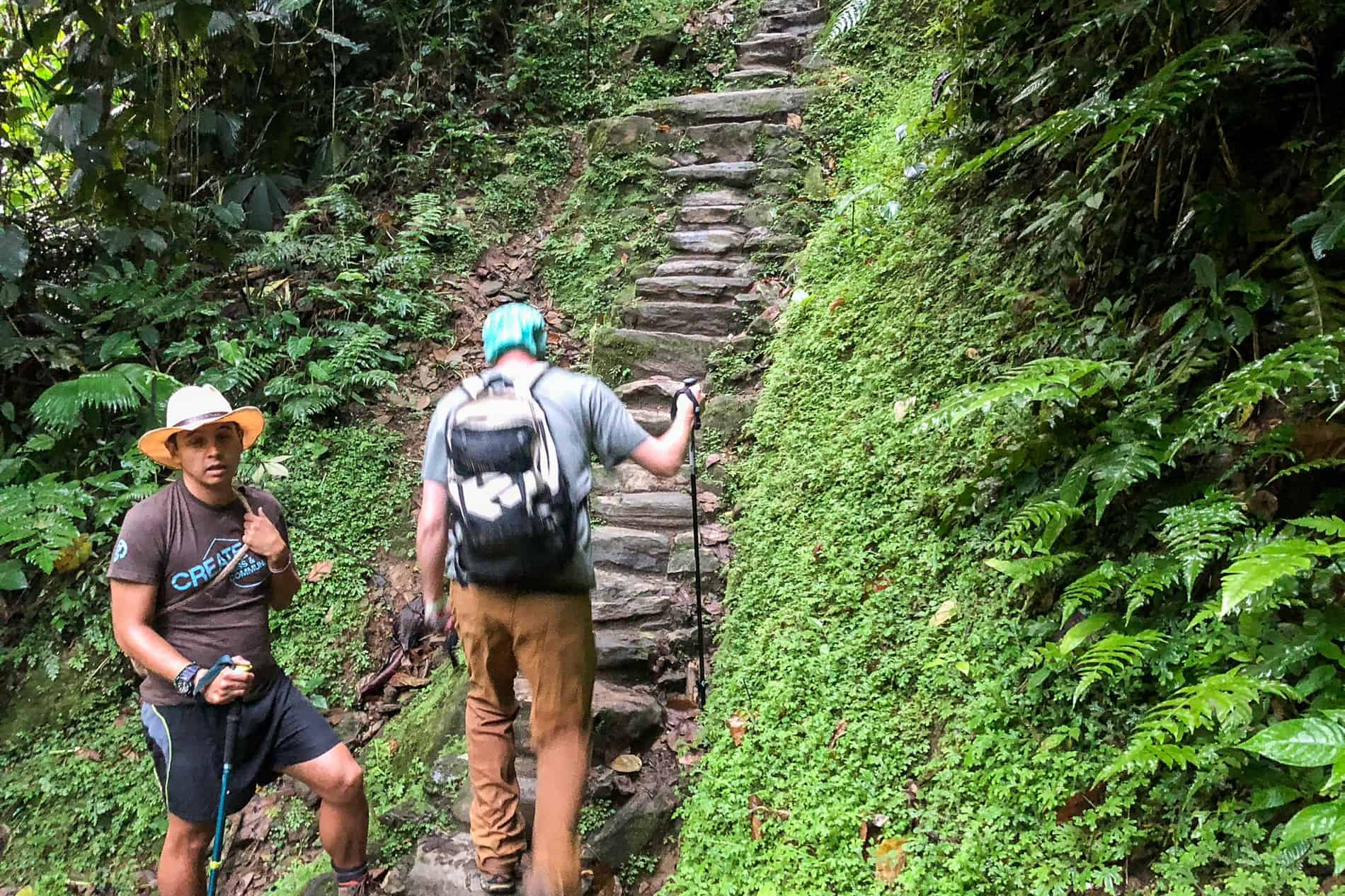
Demonstration on how to make rope from plants.
Some of the cooks here will become cooks on the trek and one day, maybe we will even see female guides lead the way on this sacred pilgrimage.
